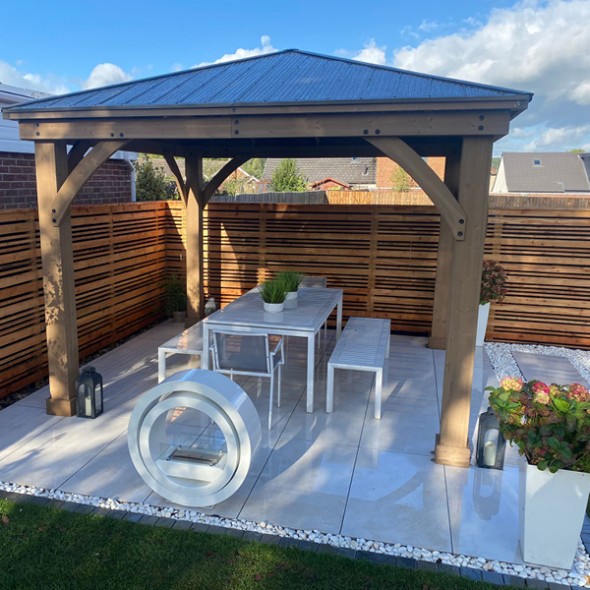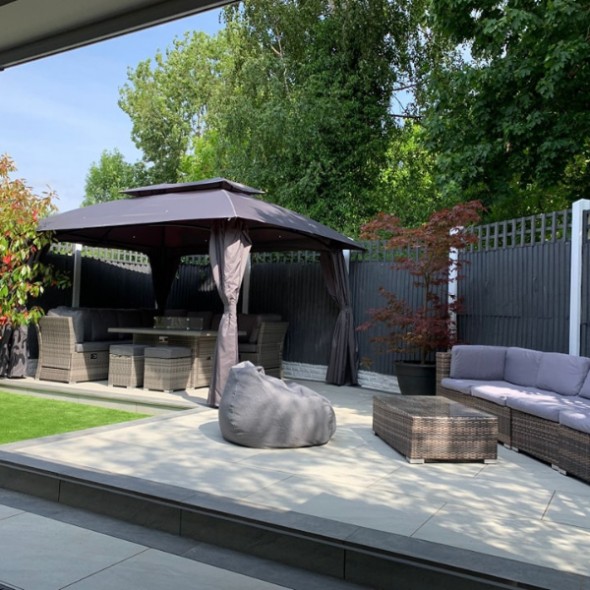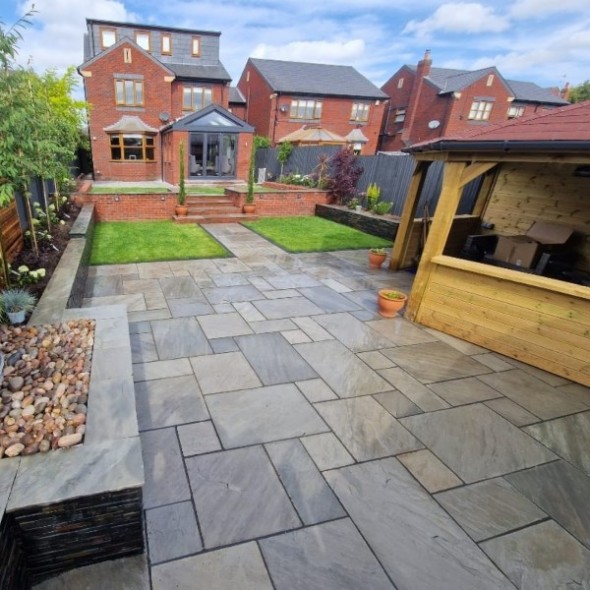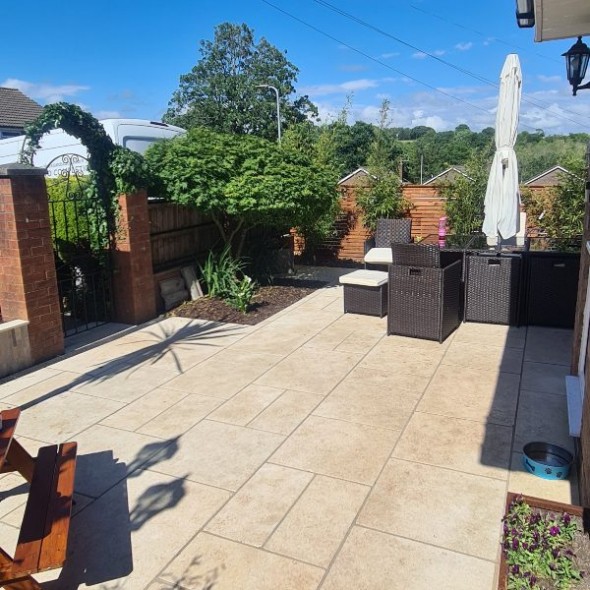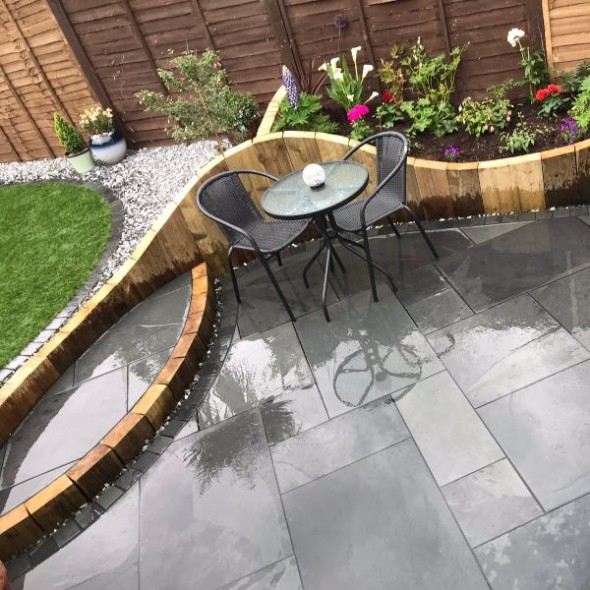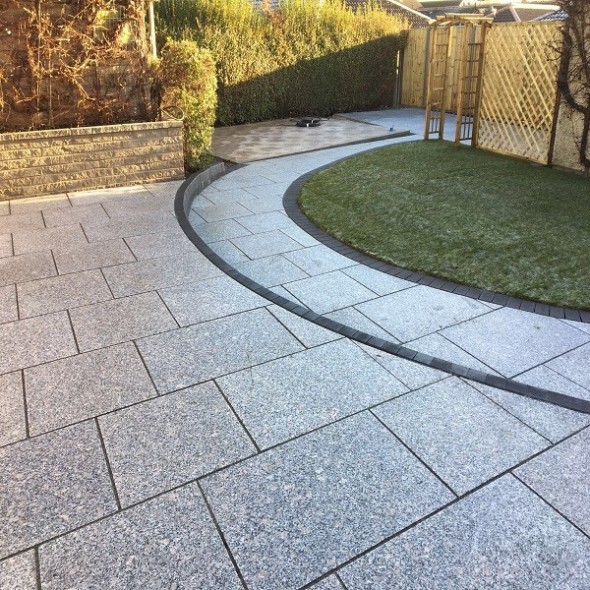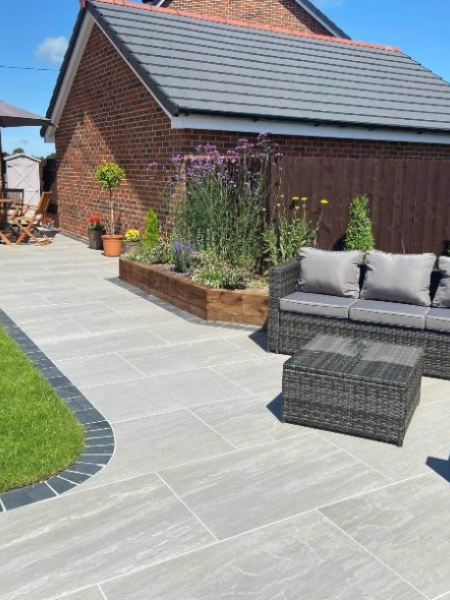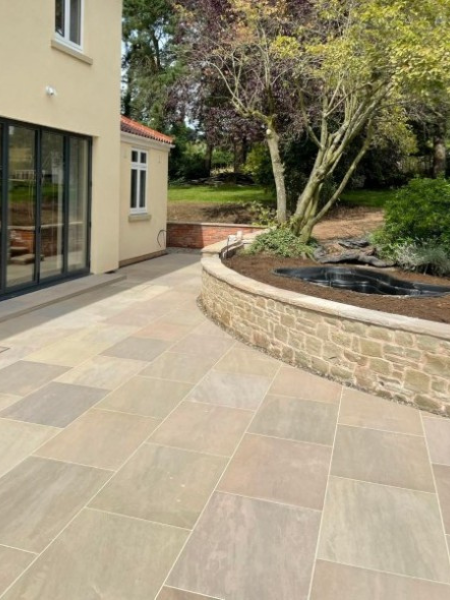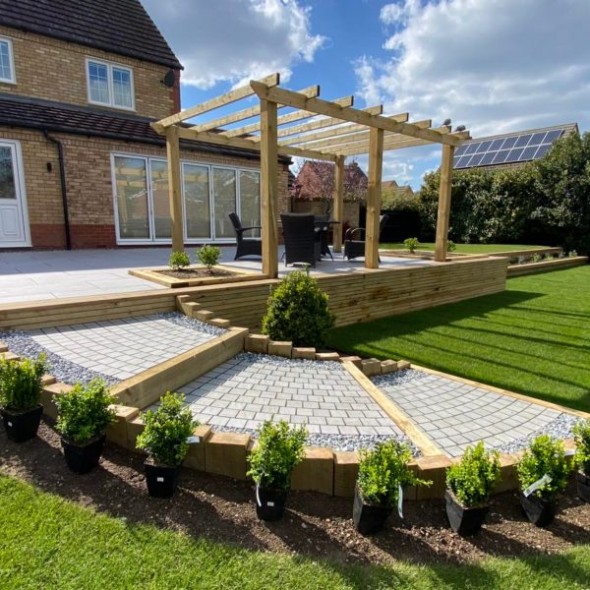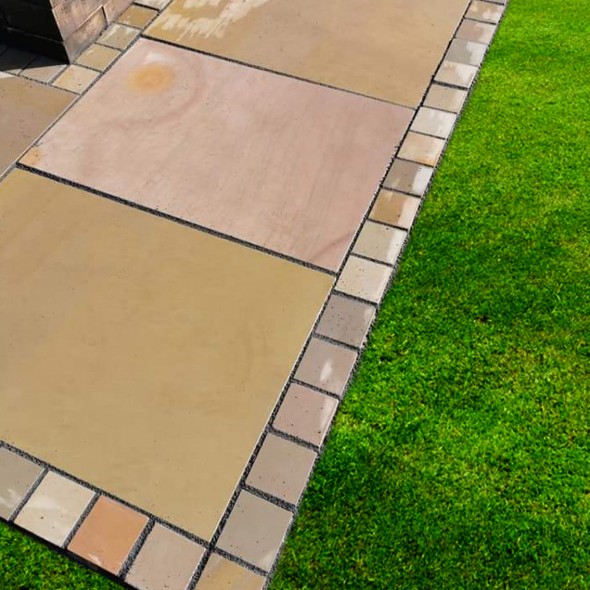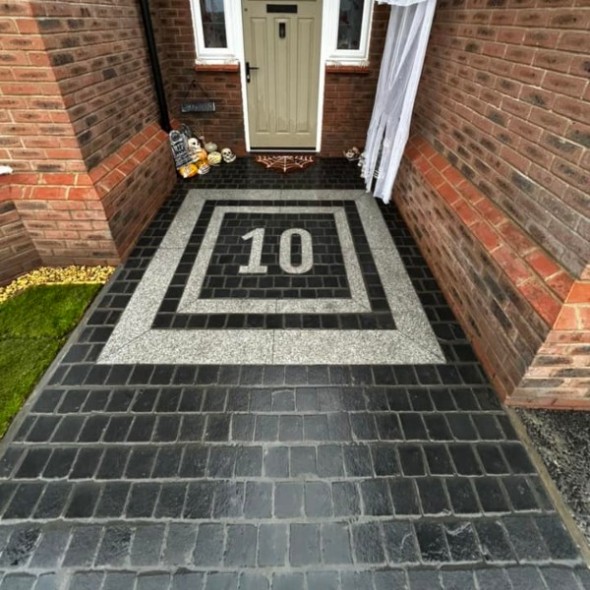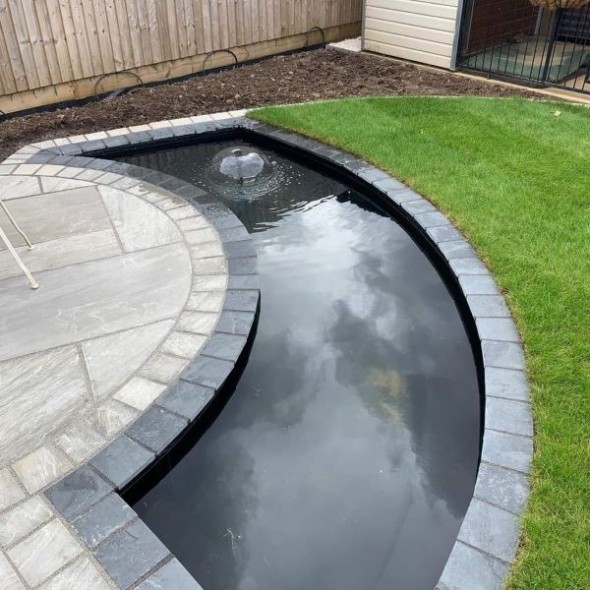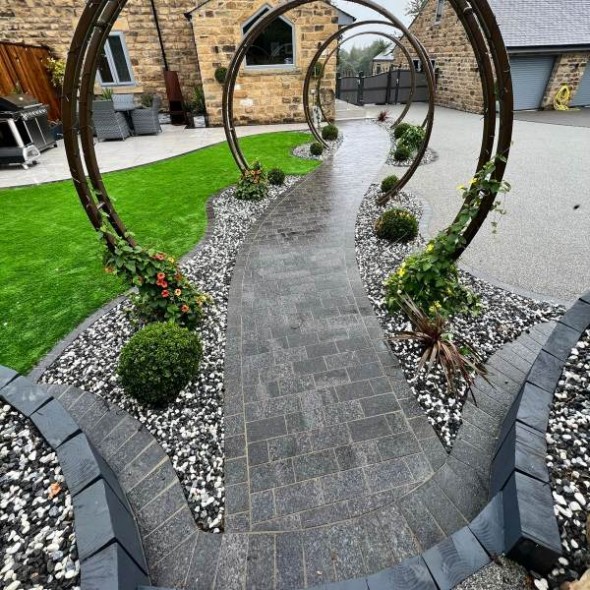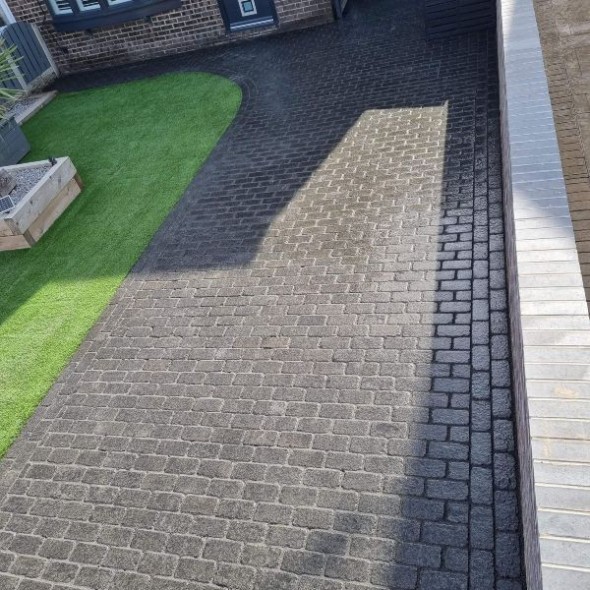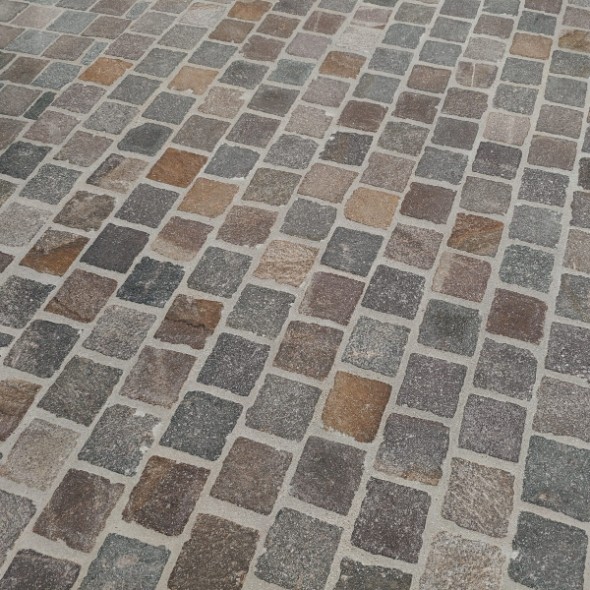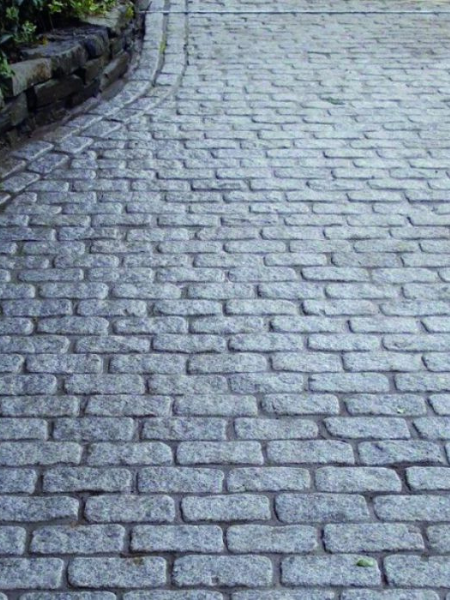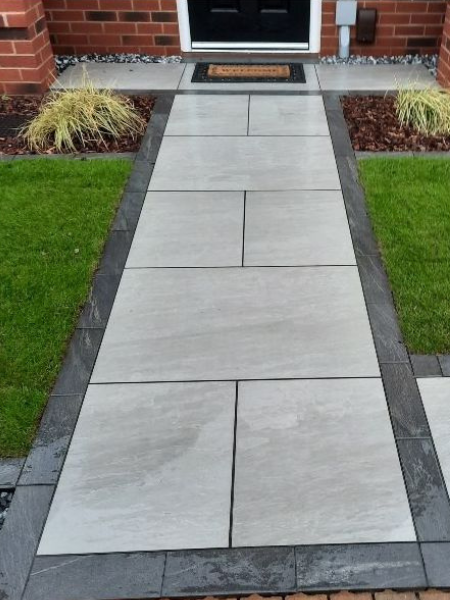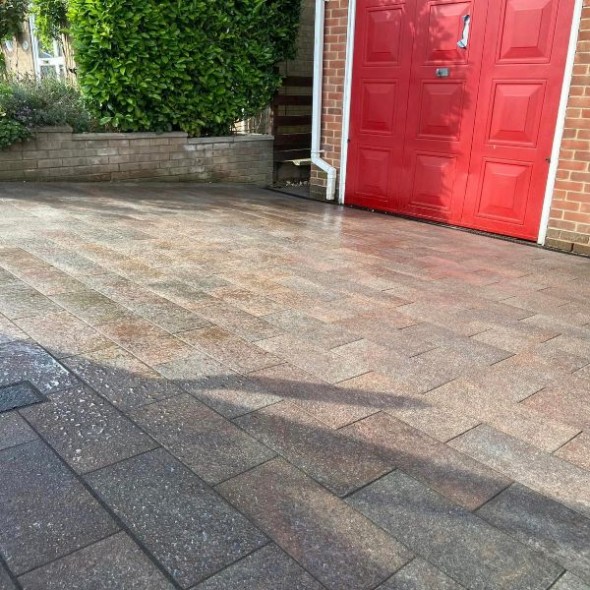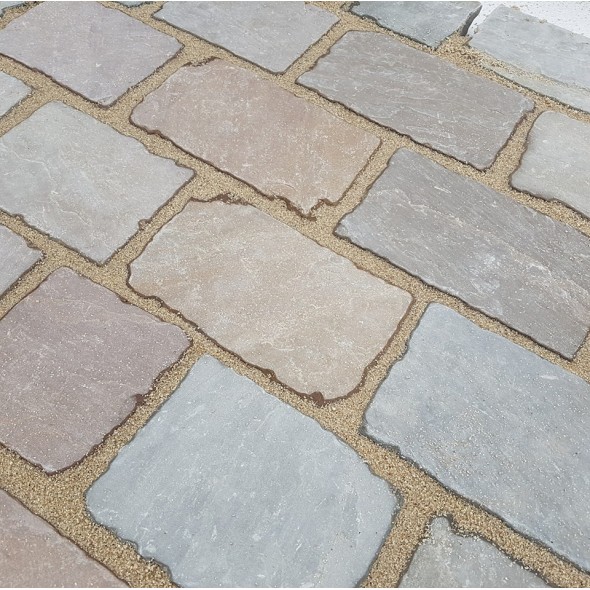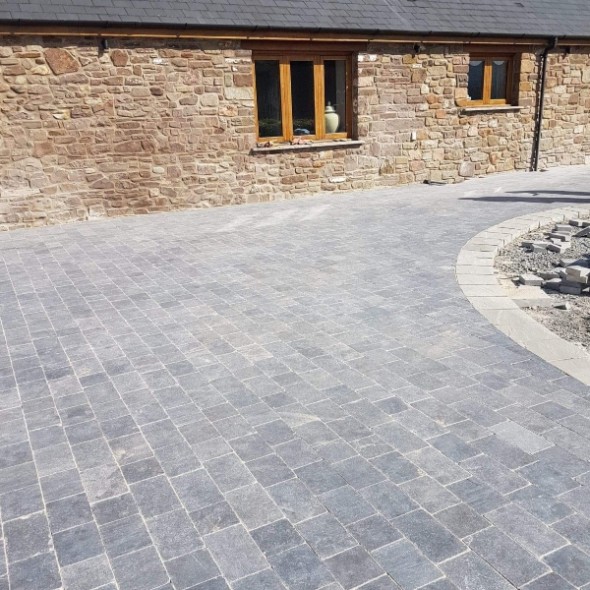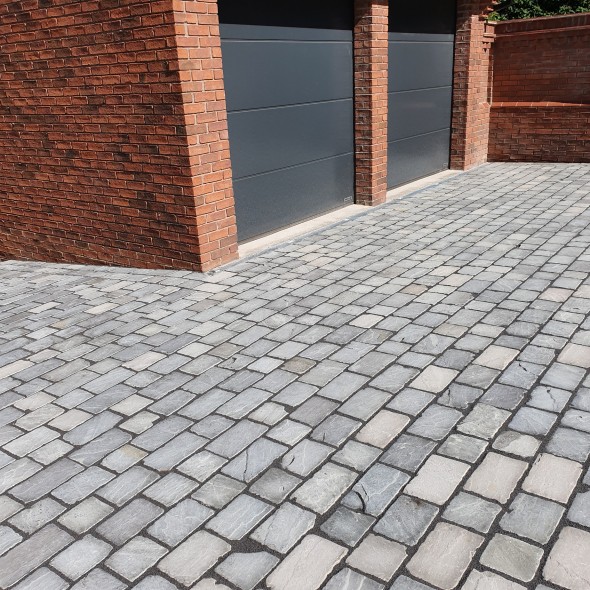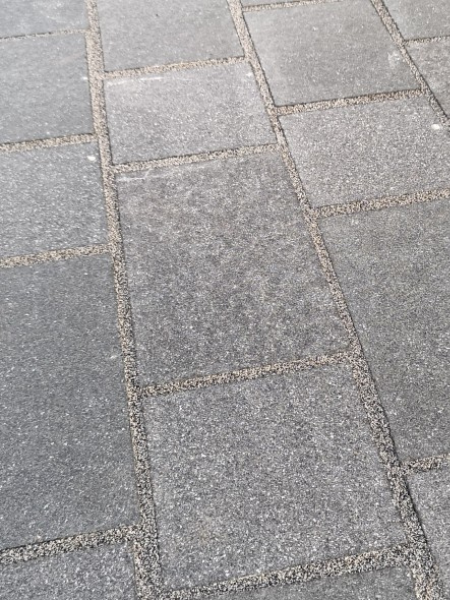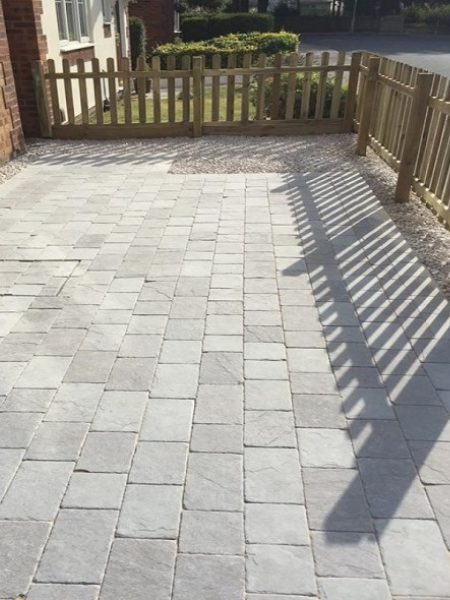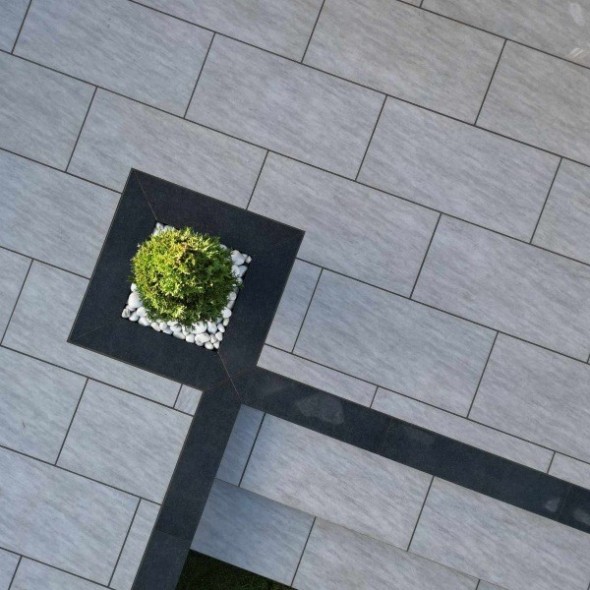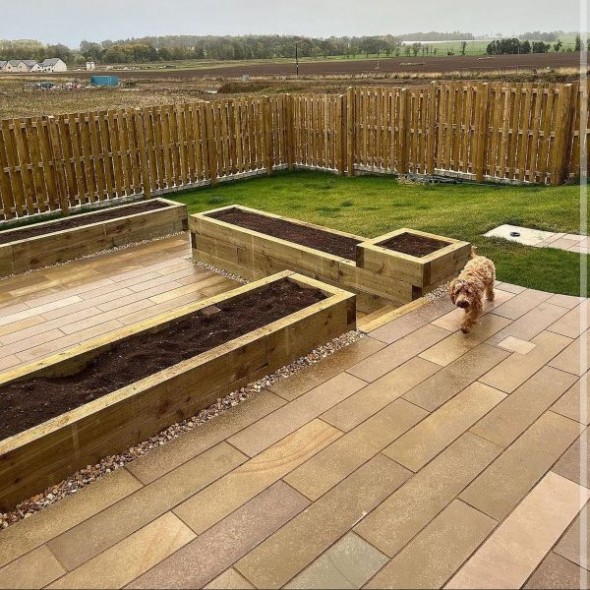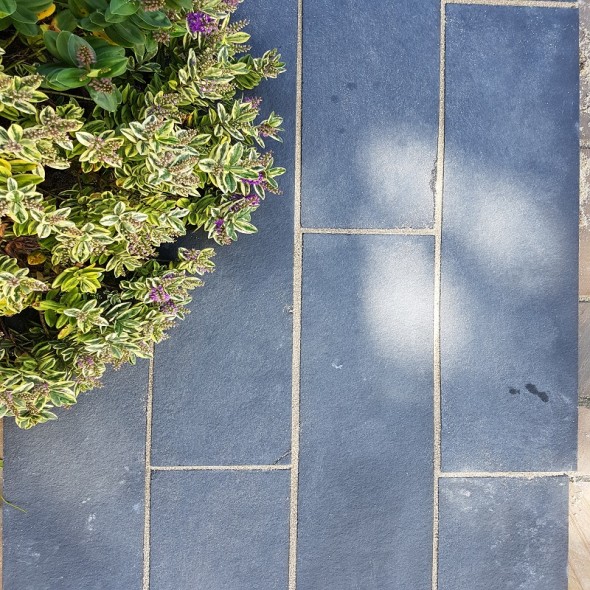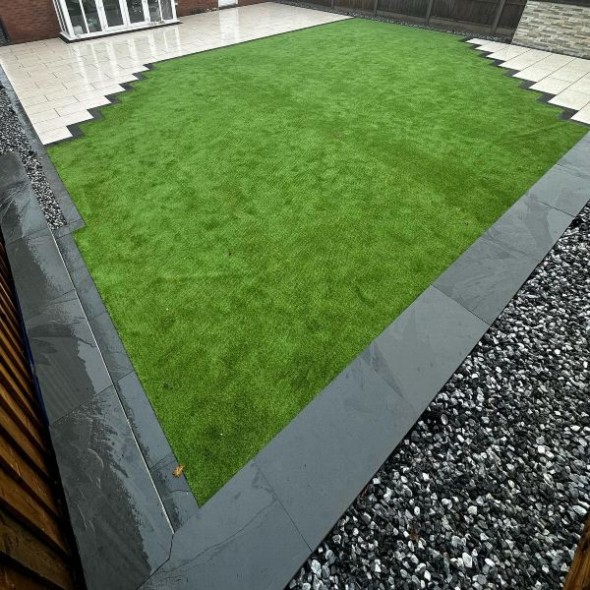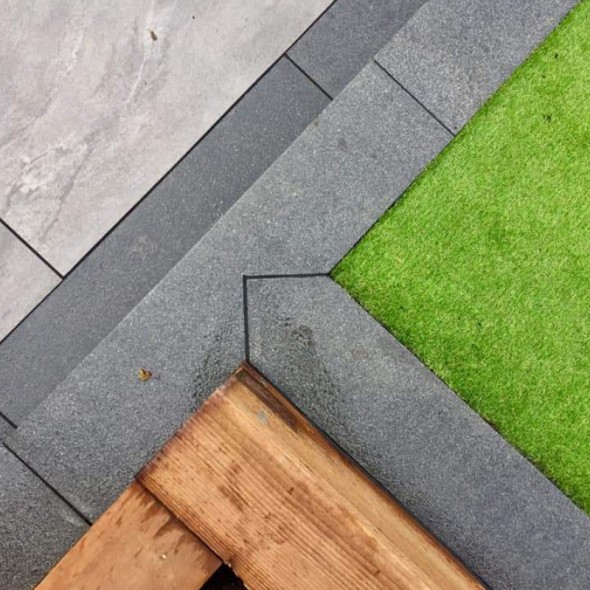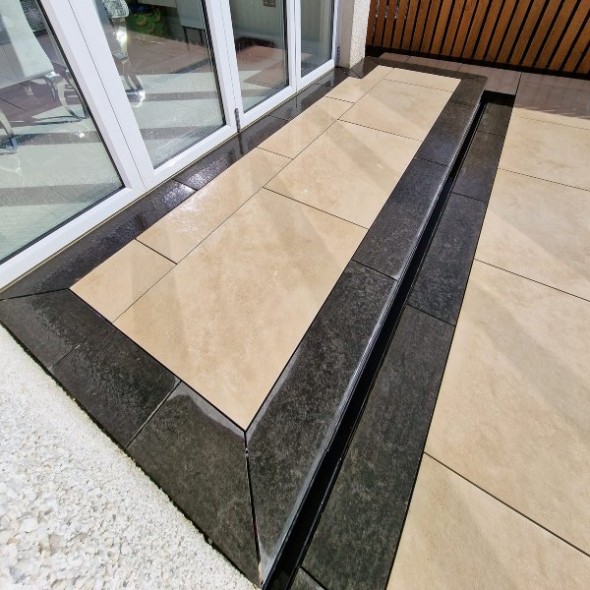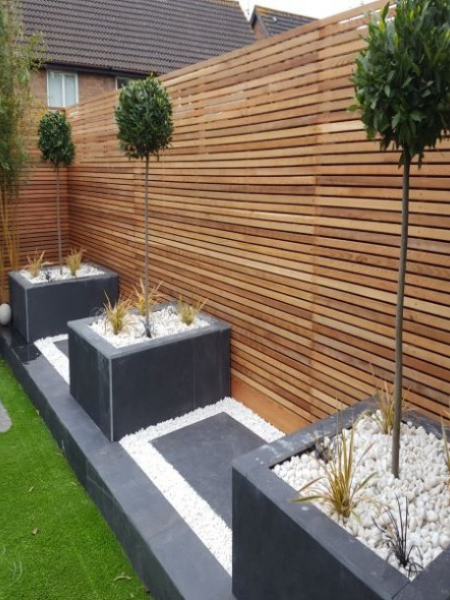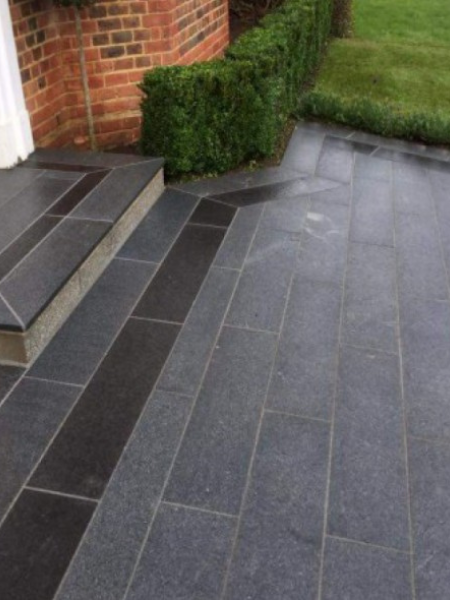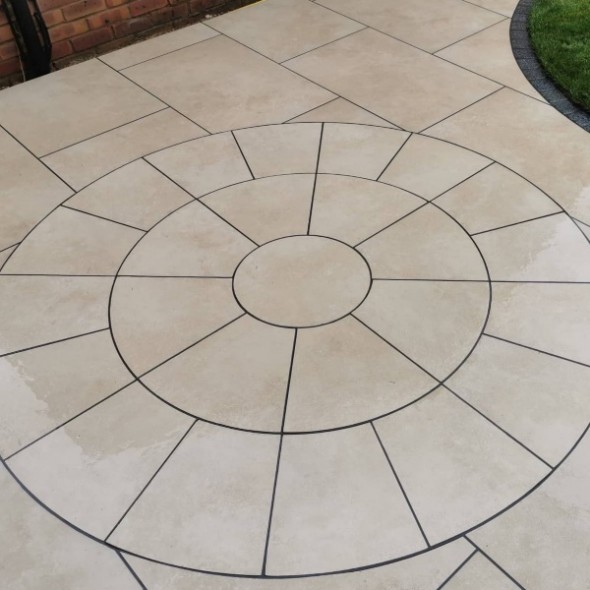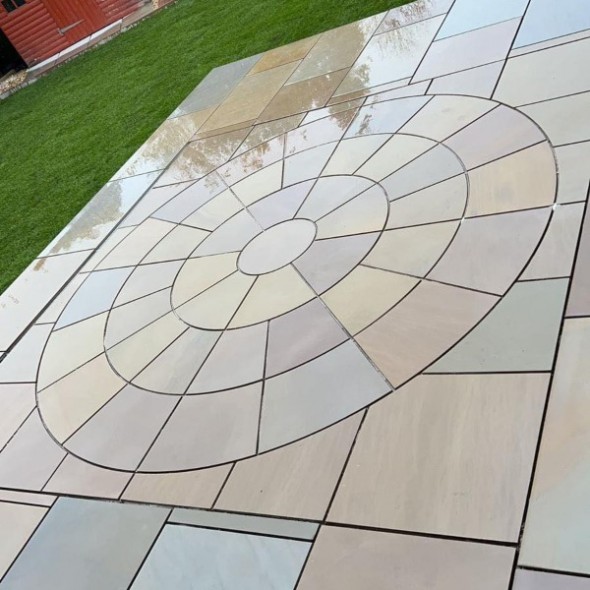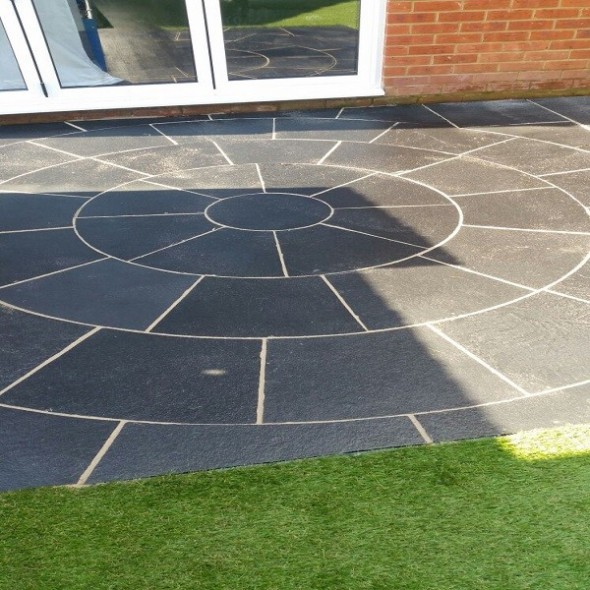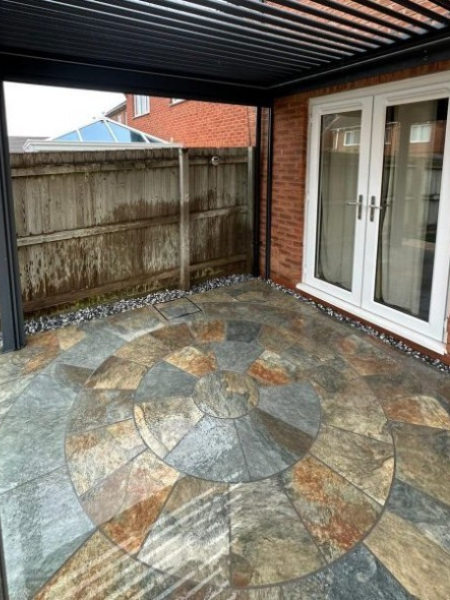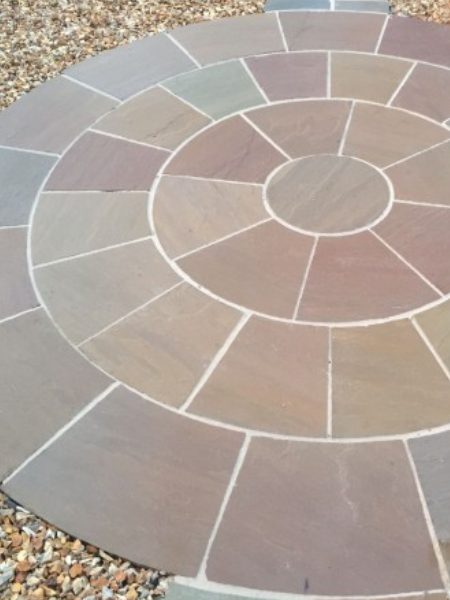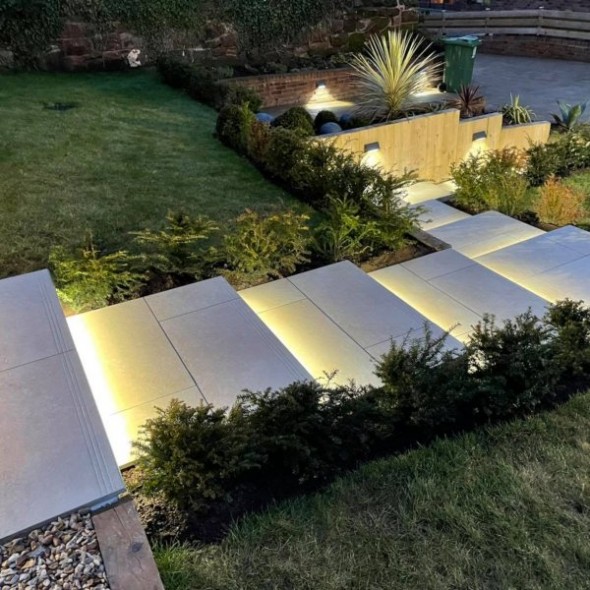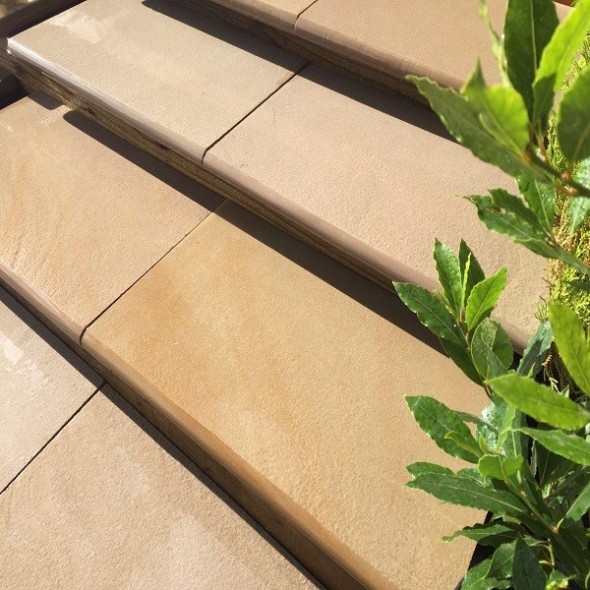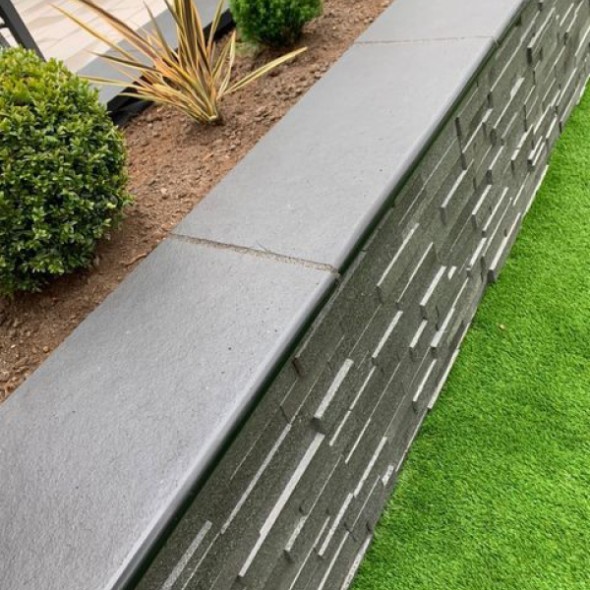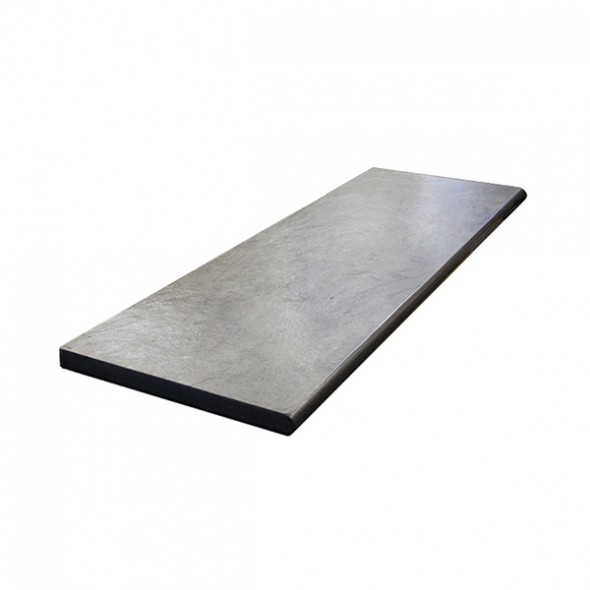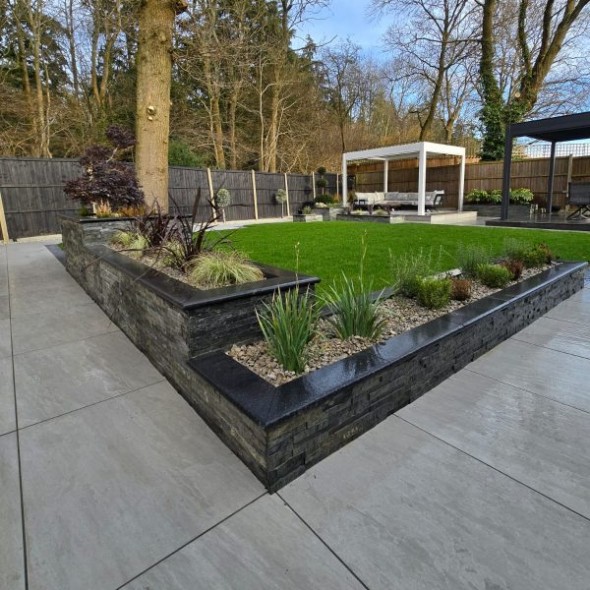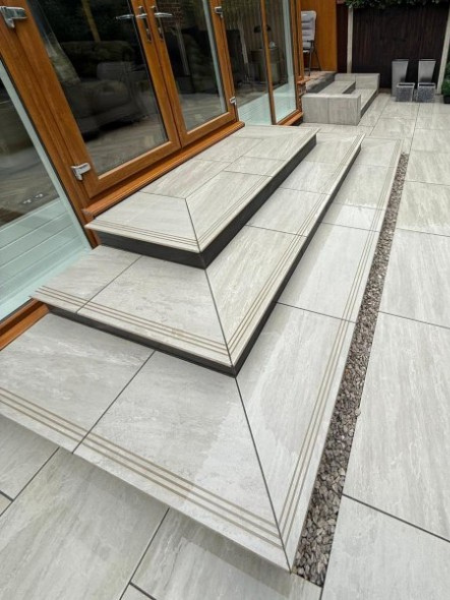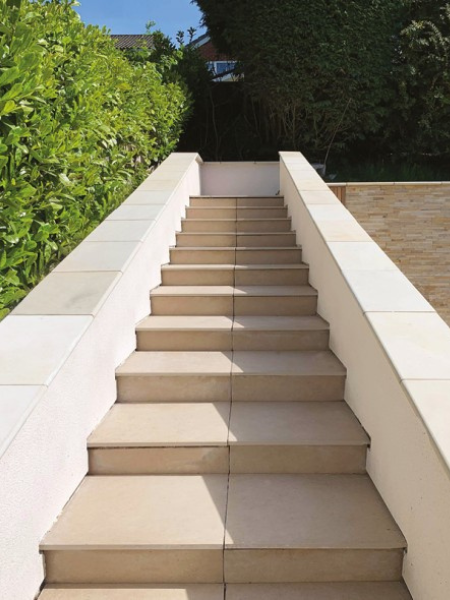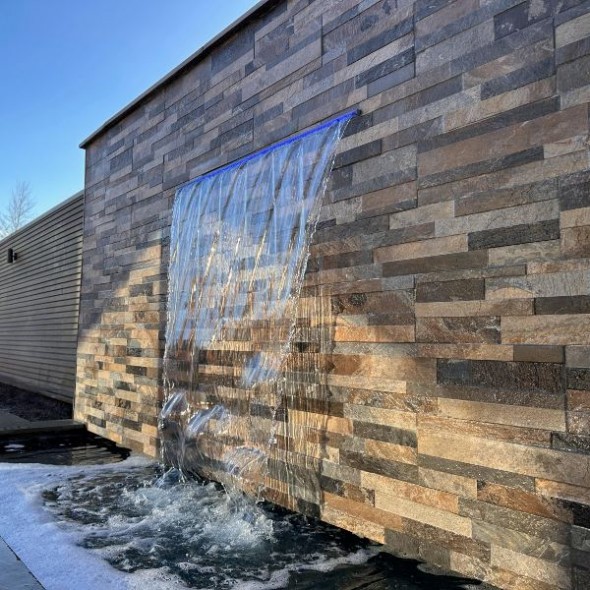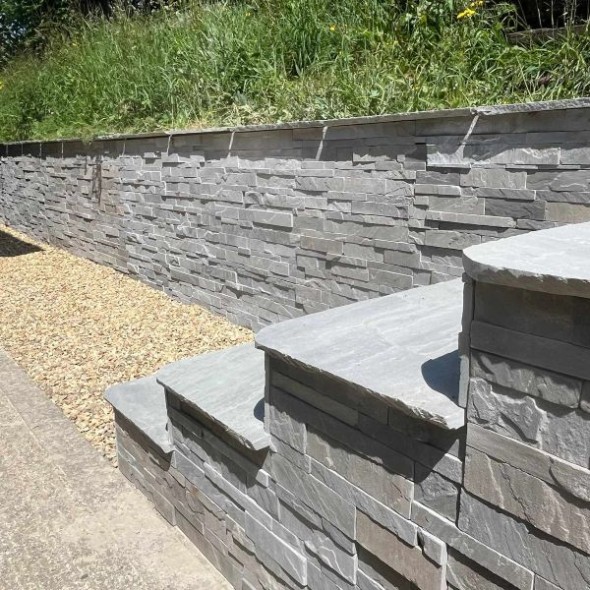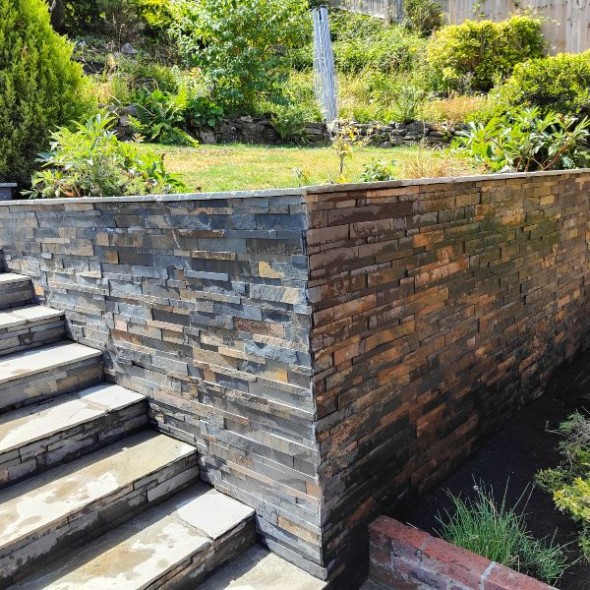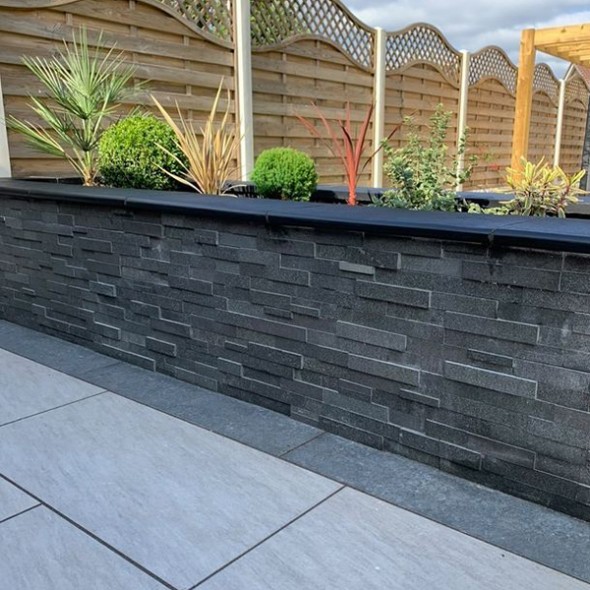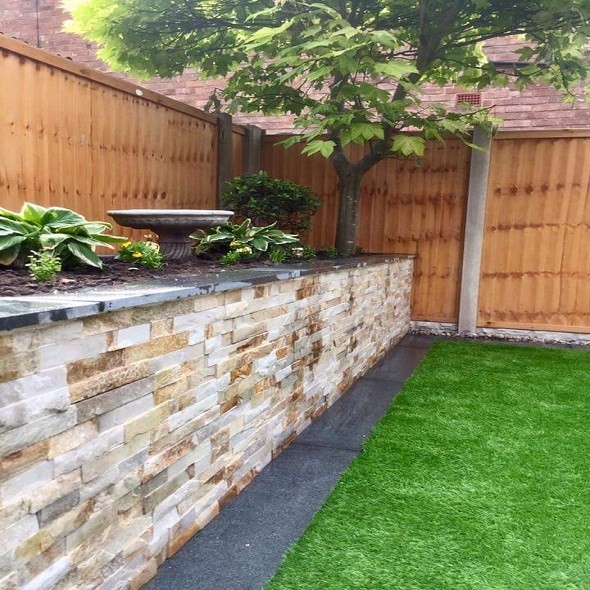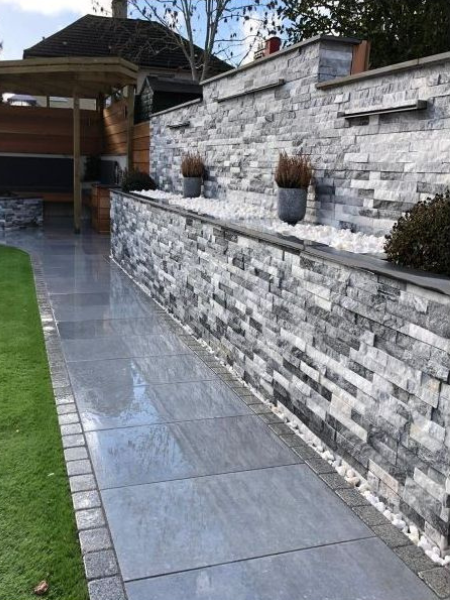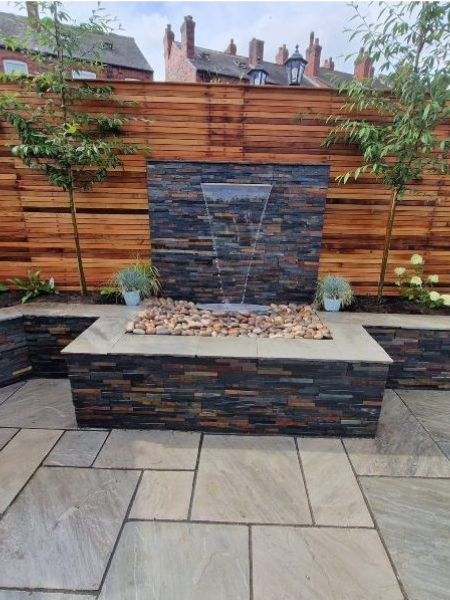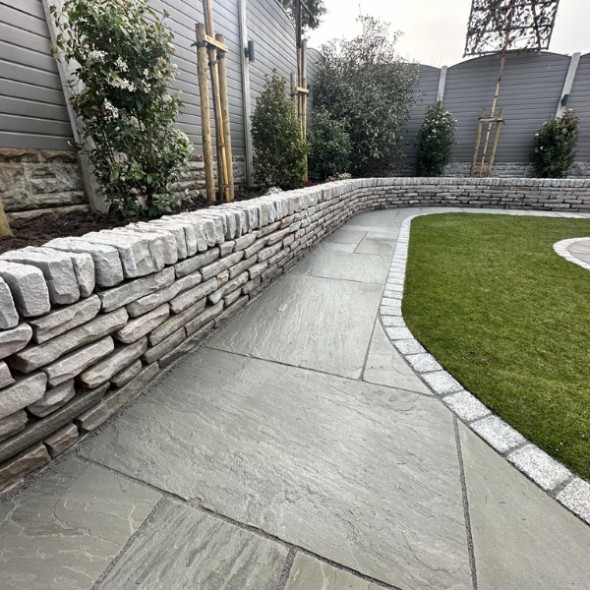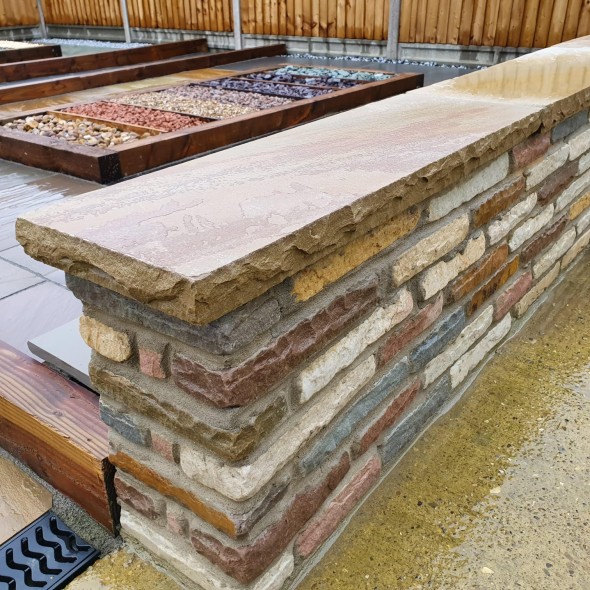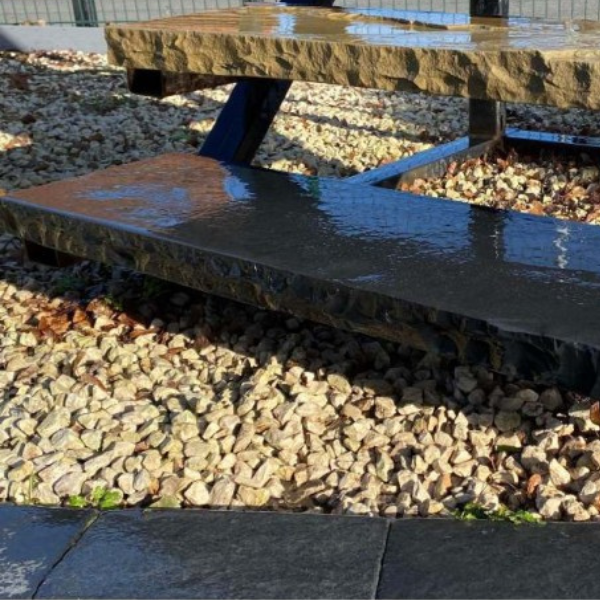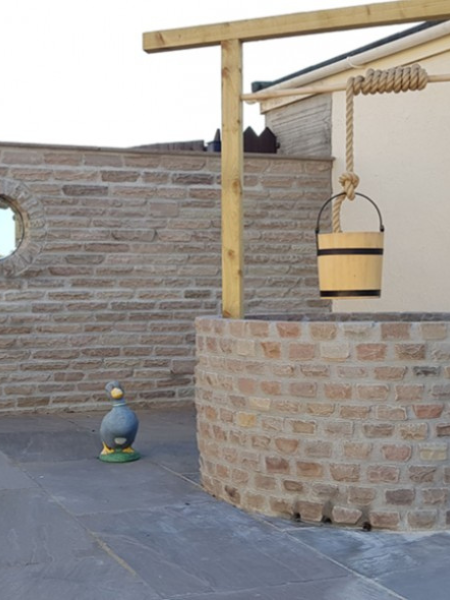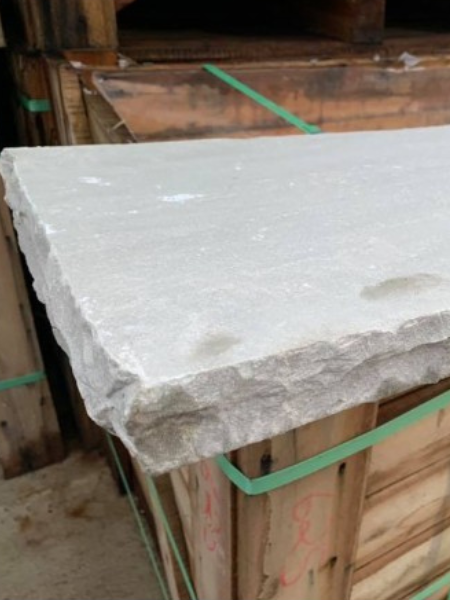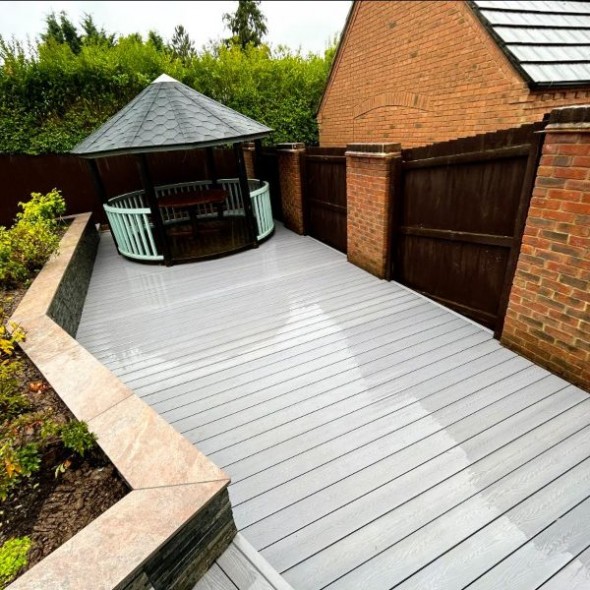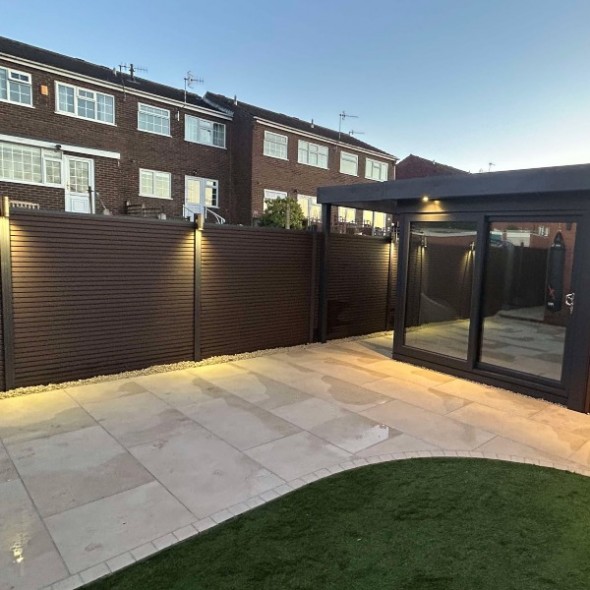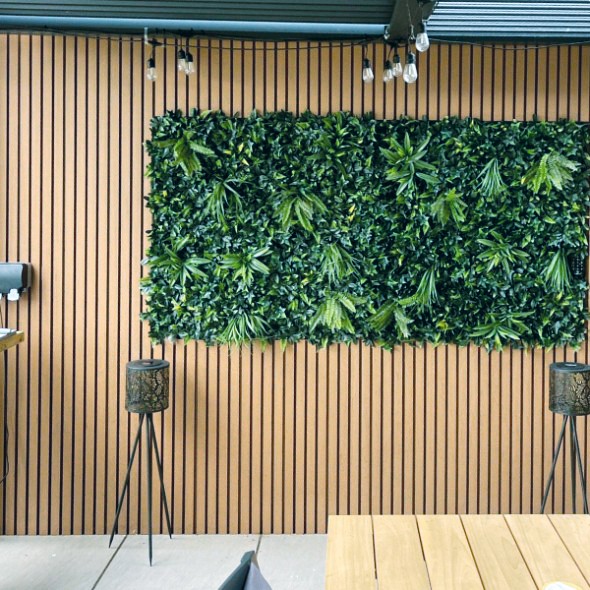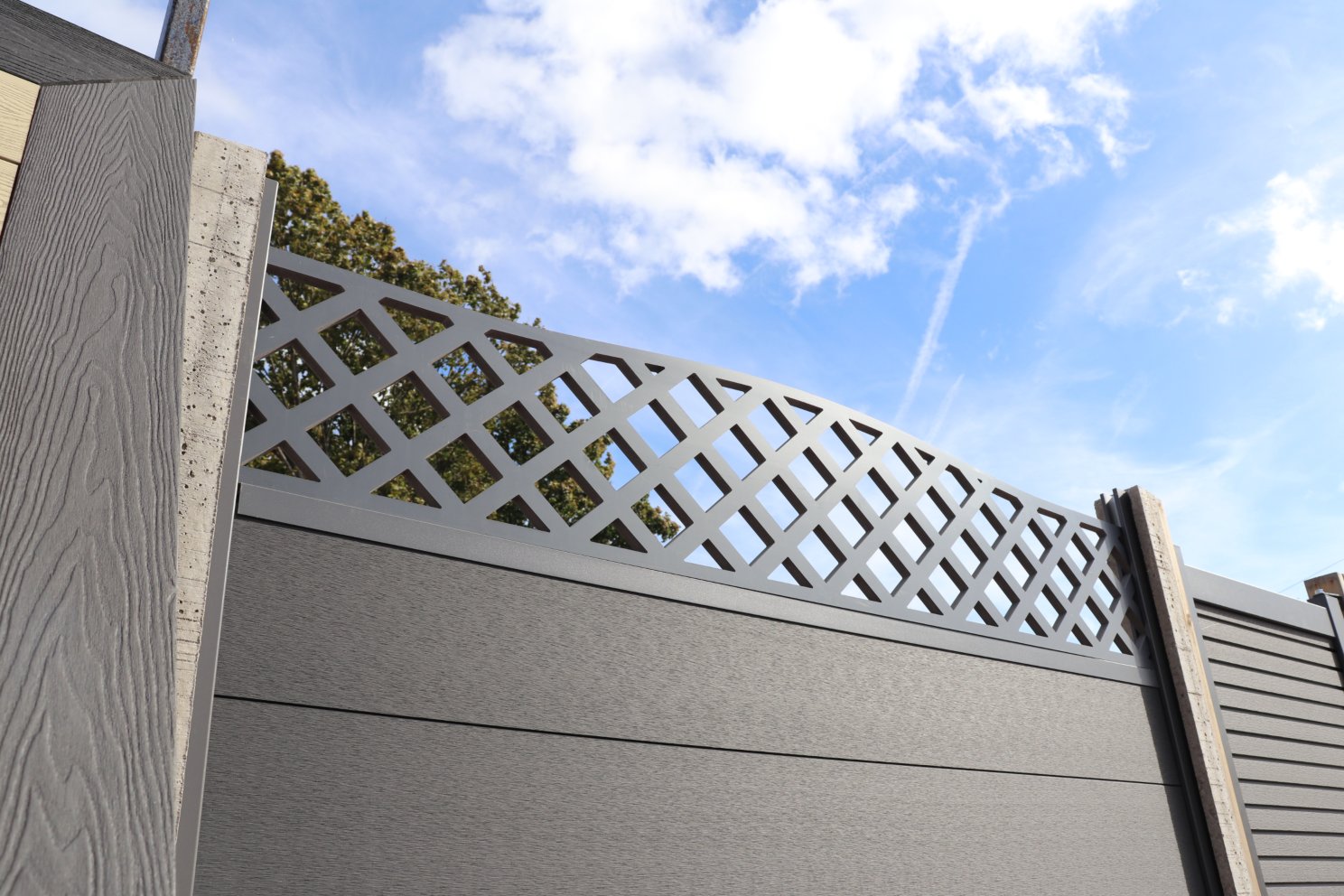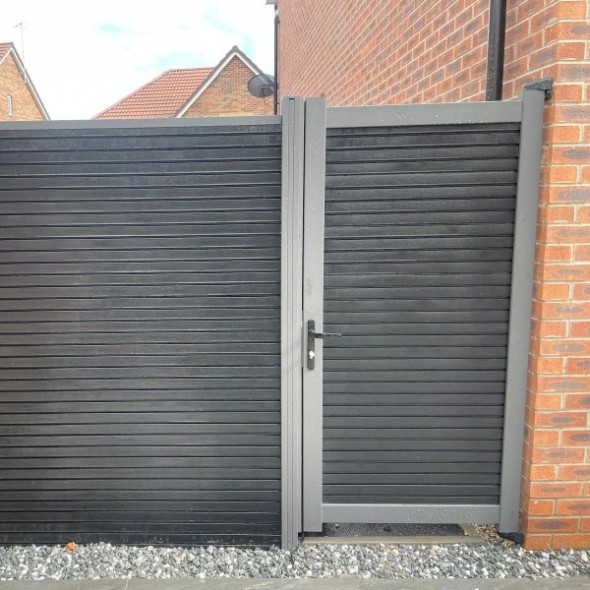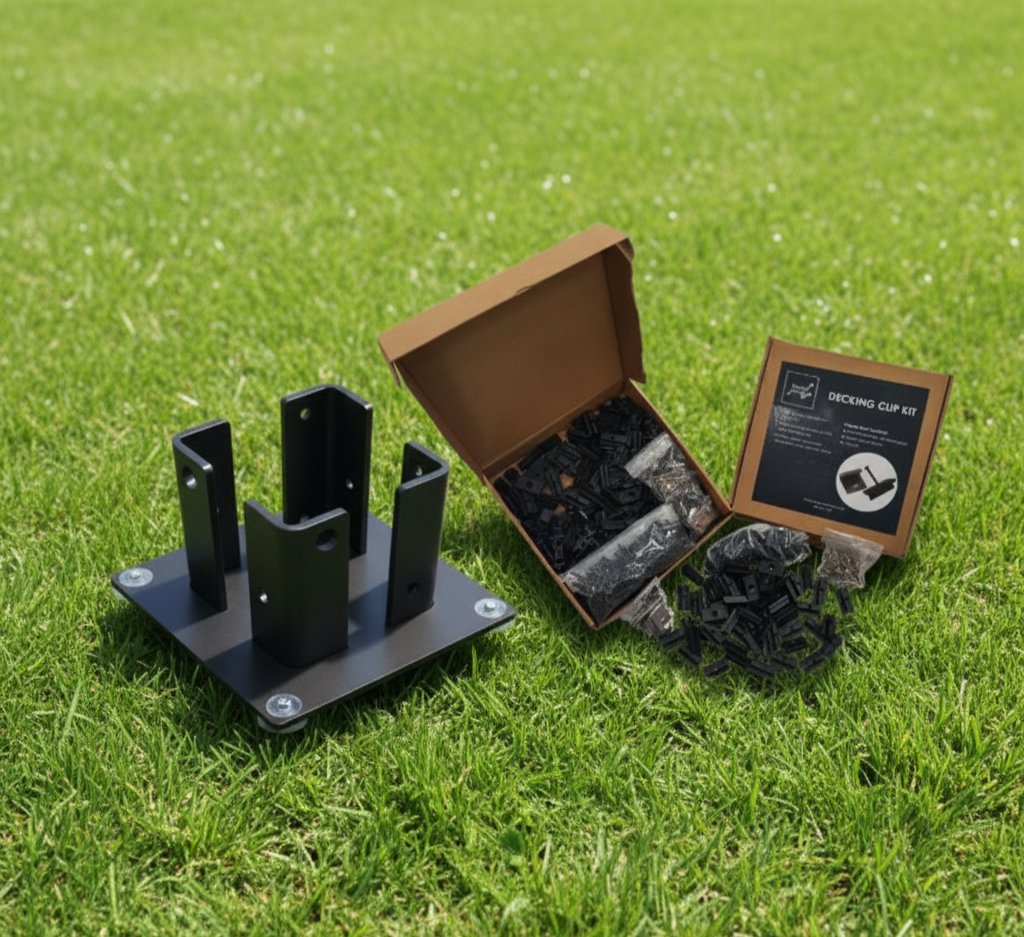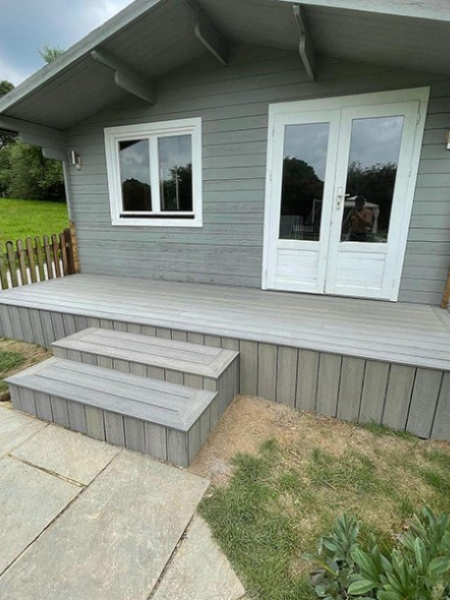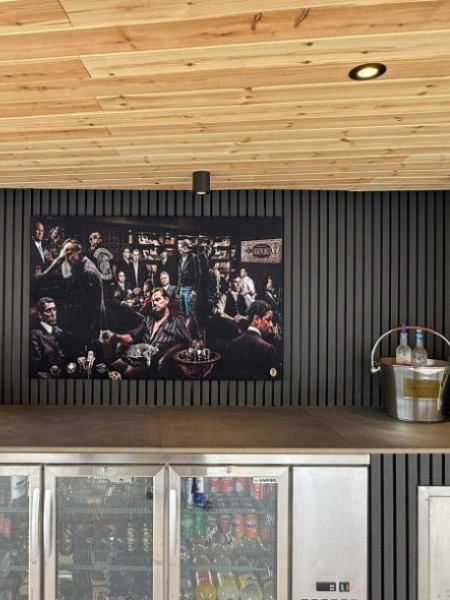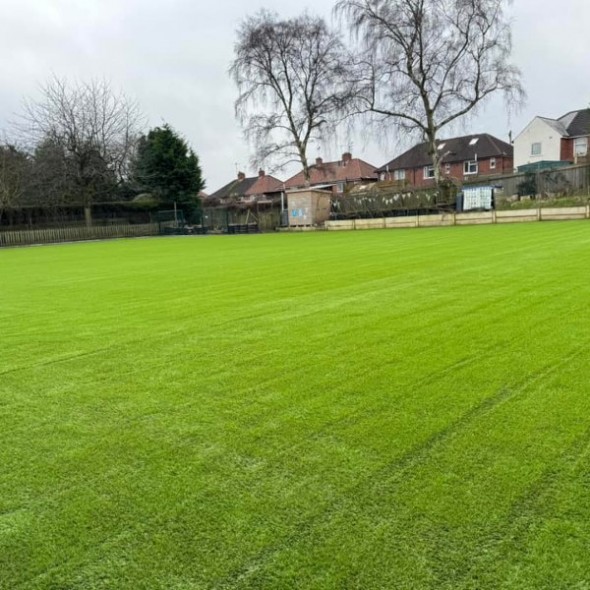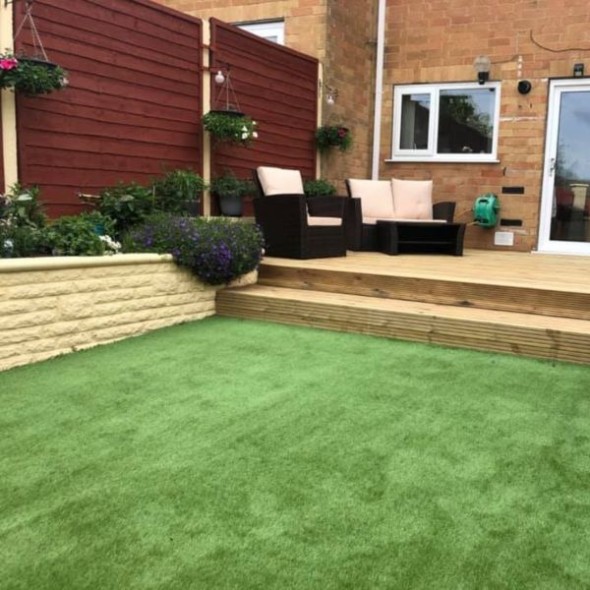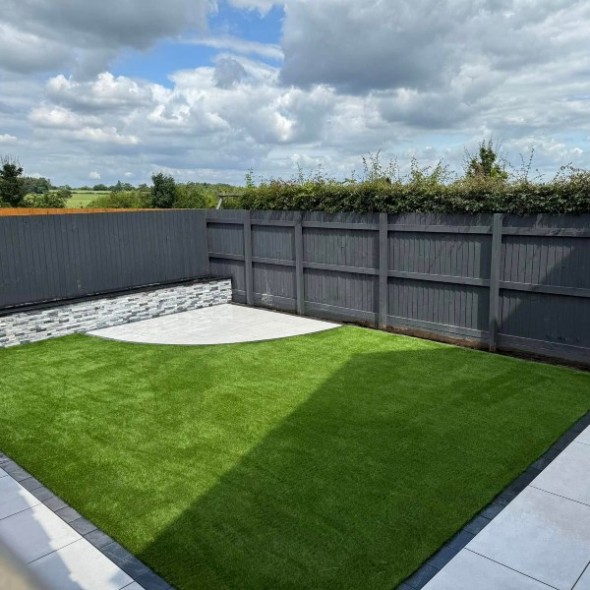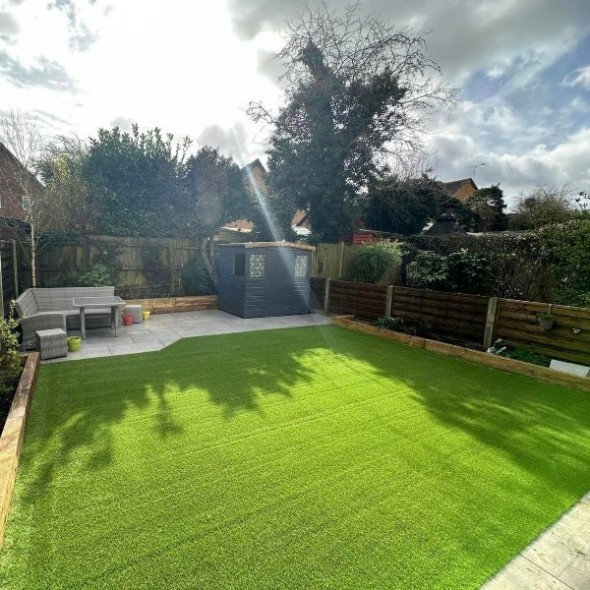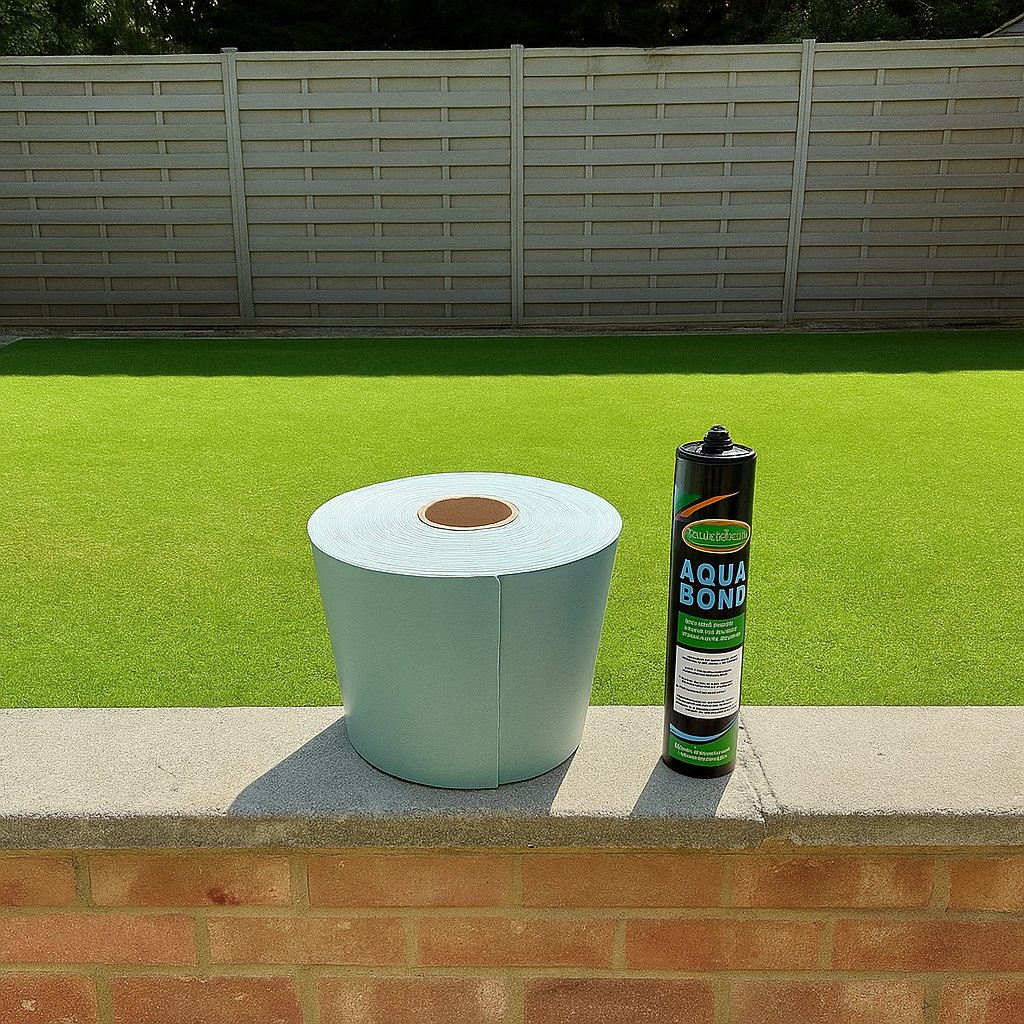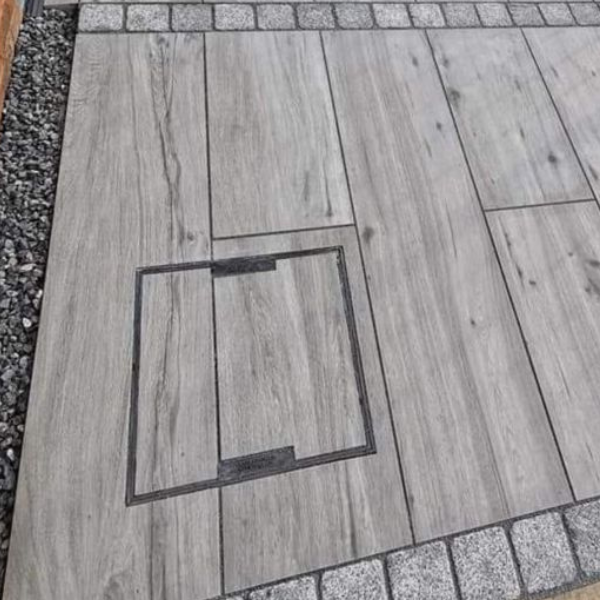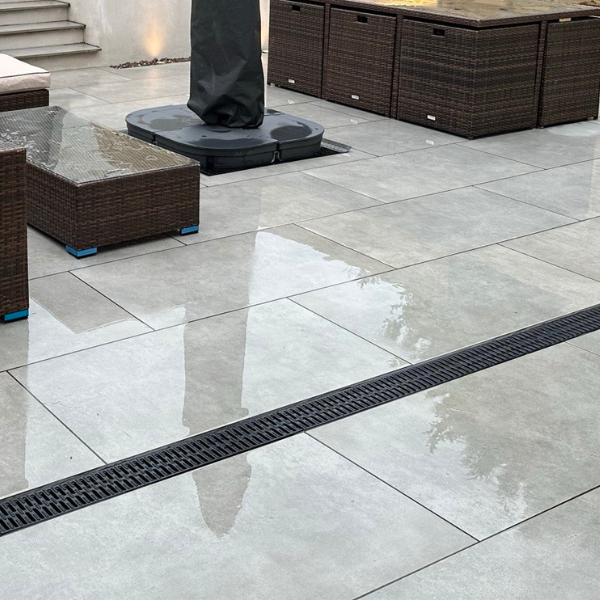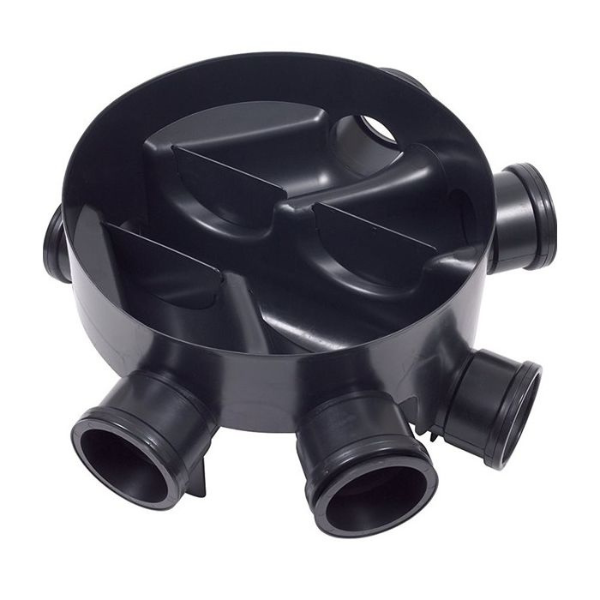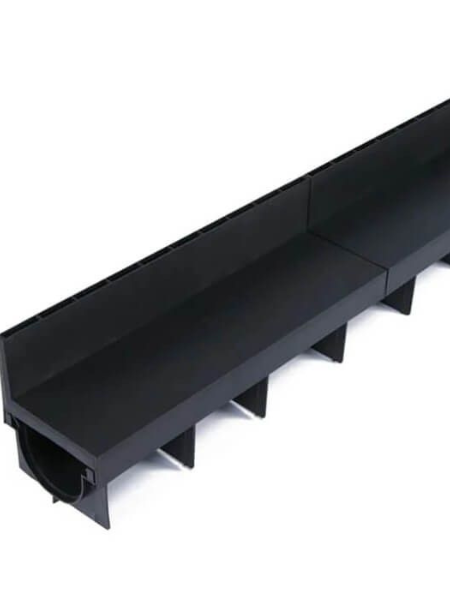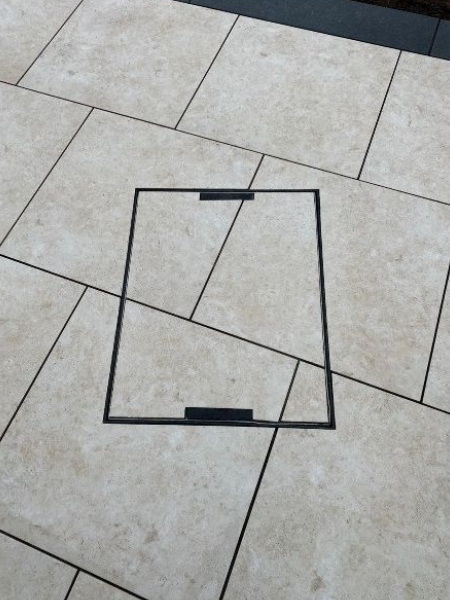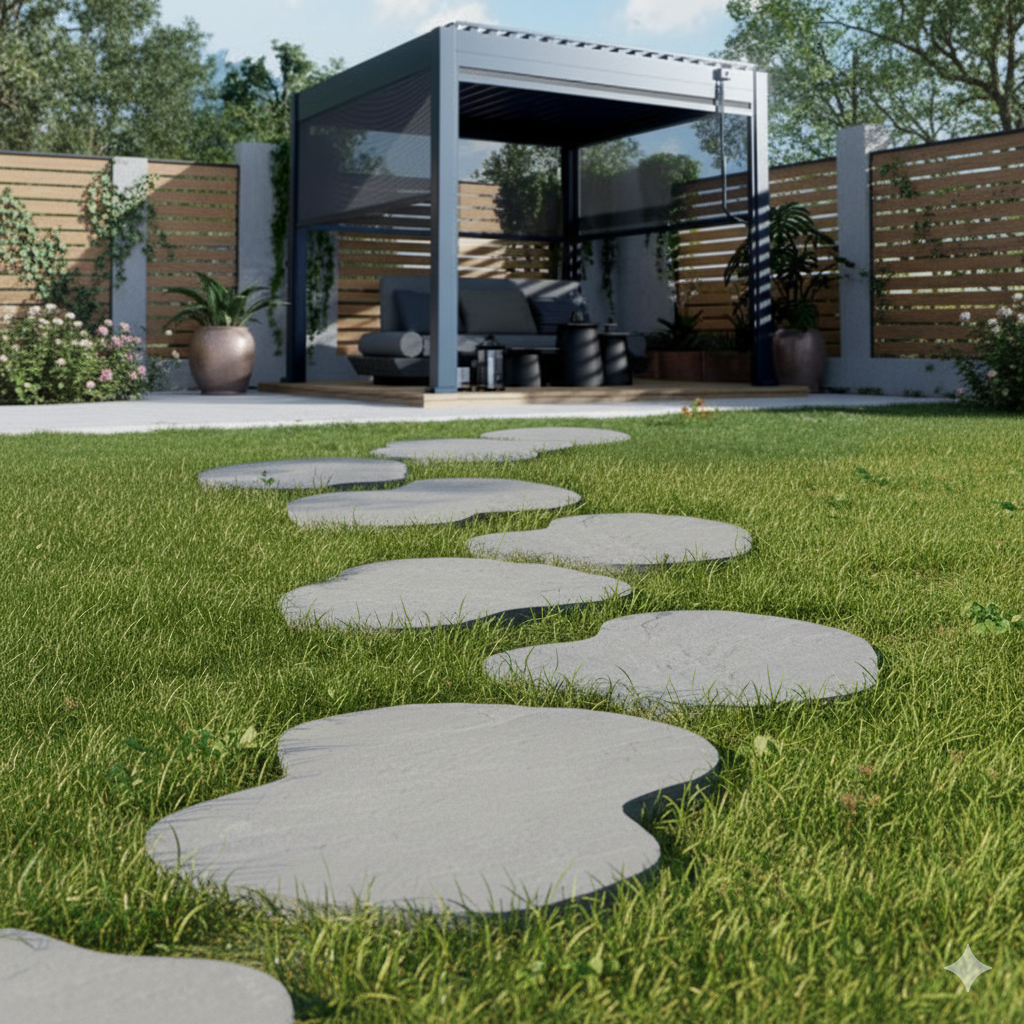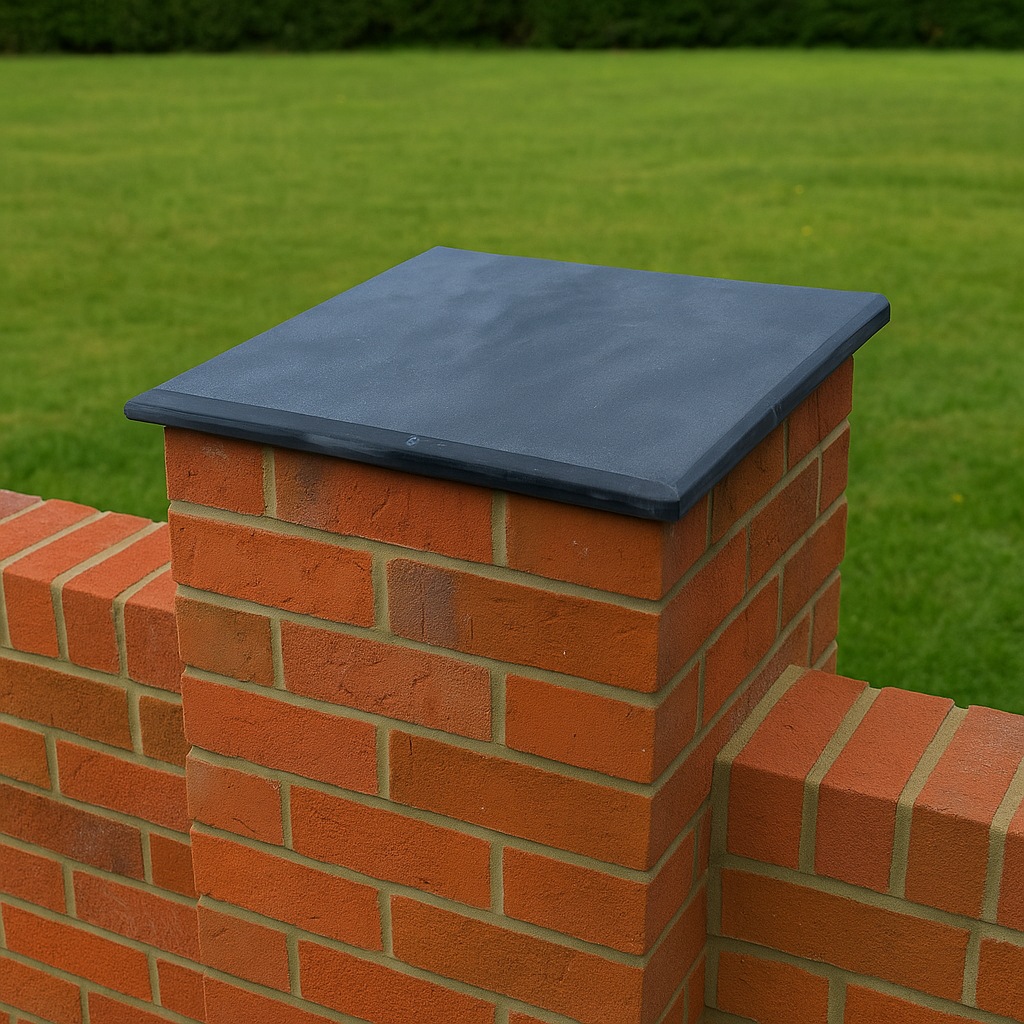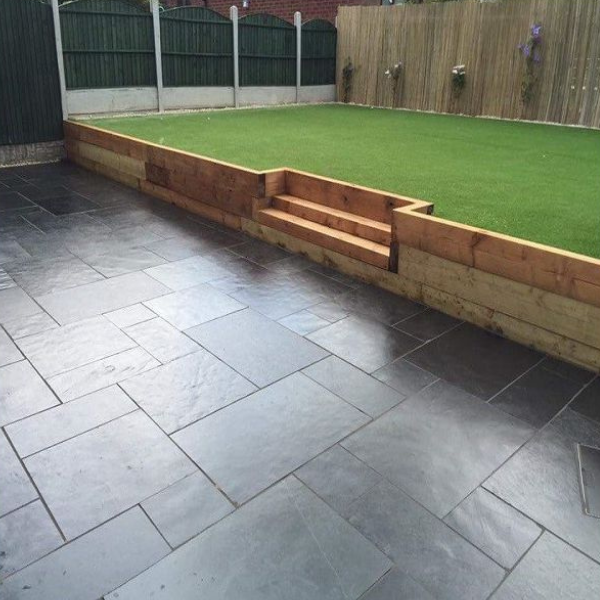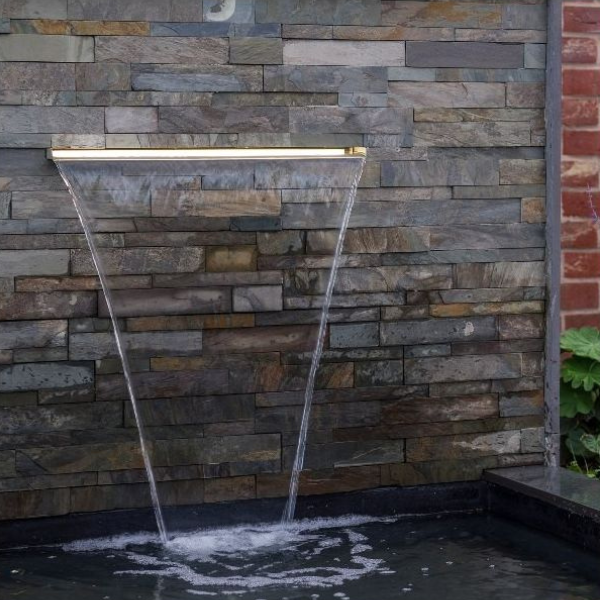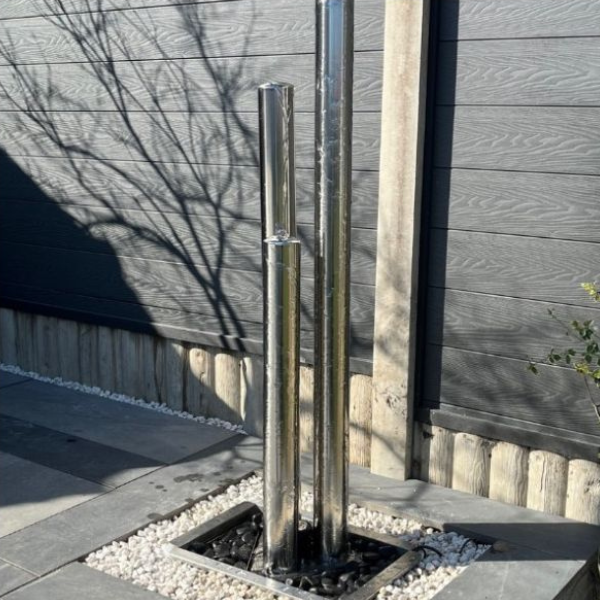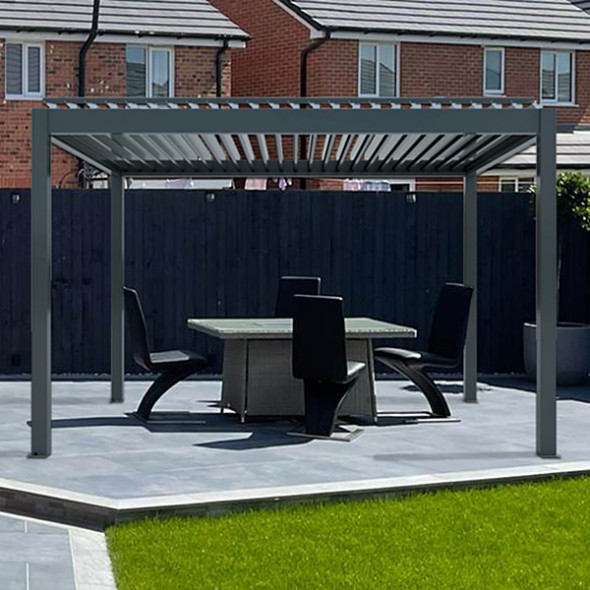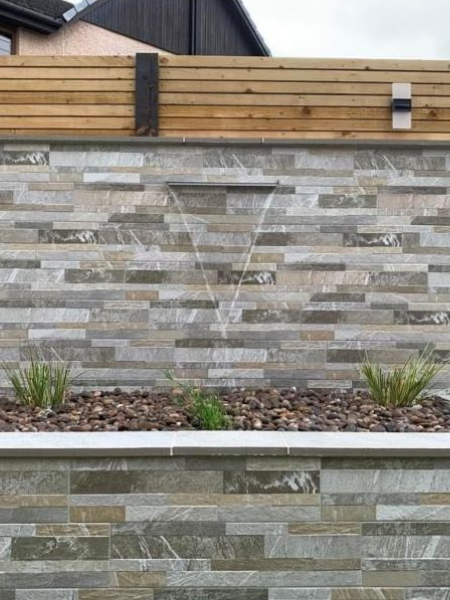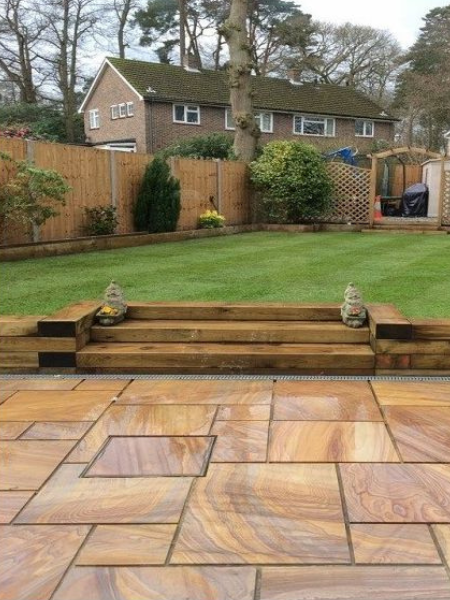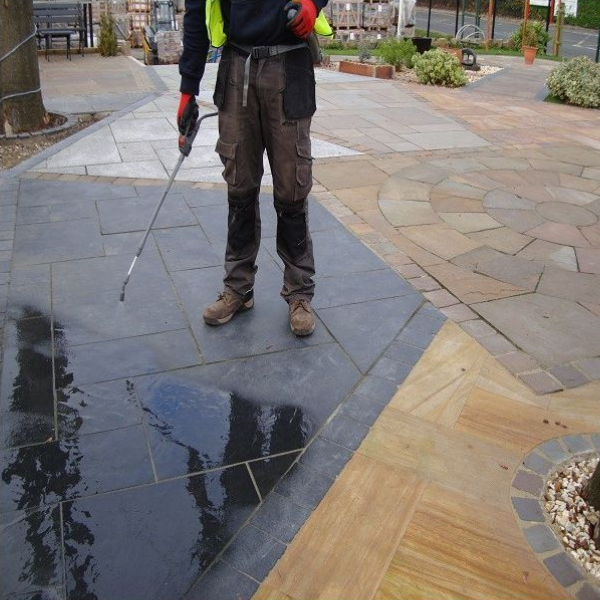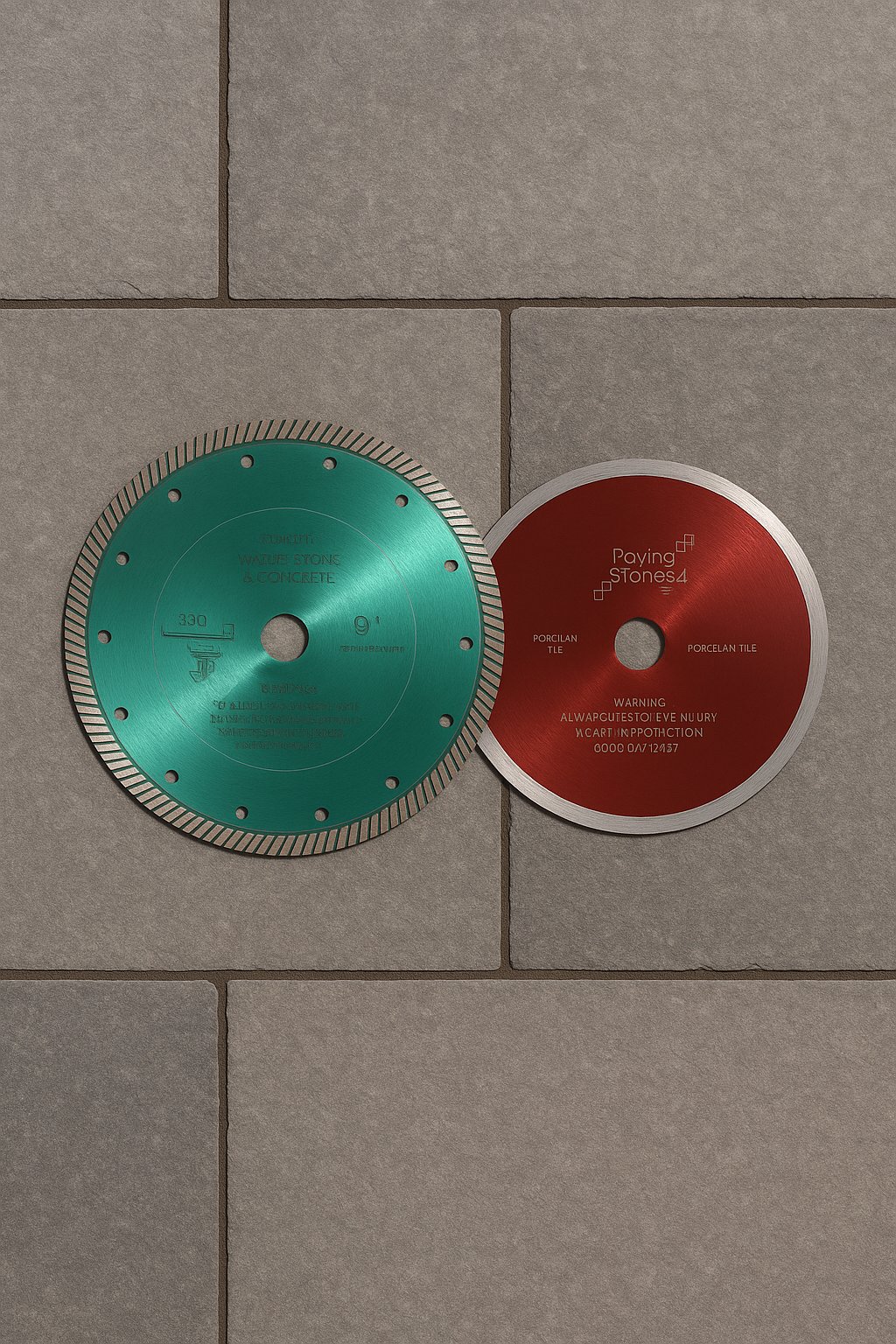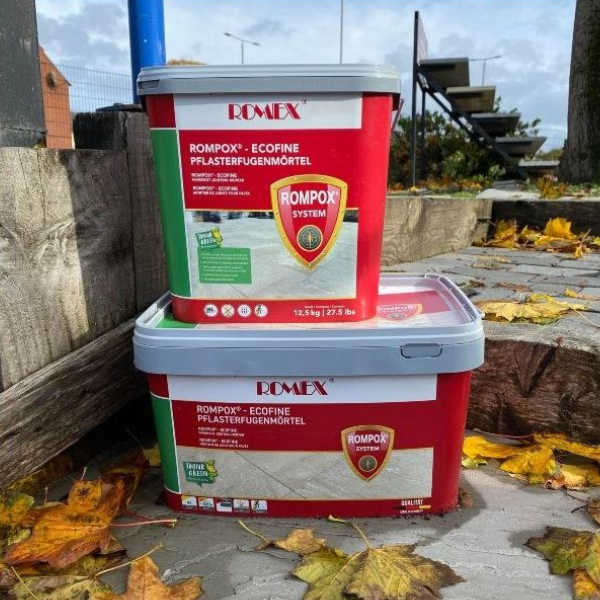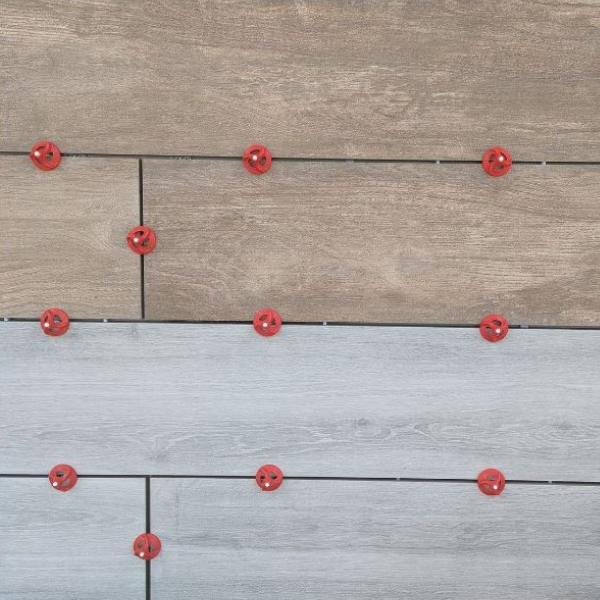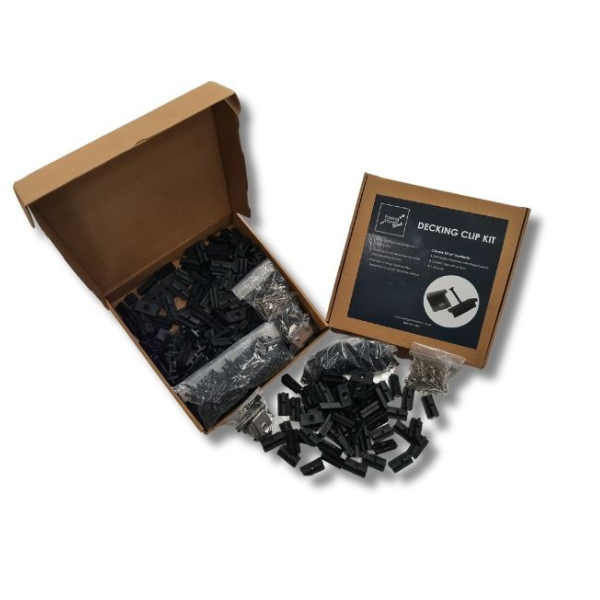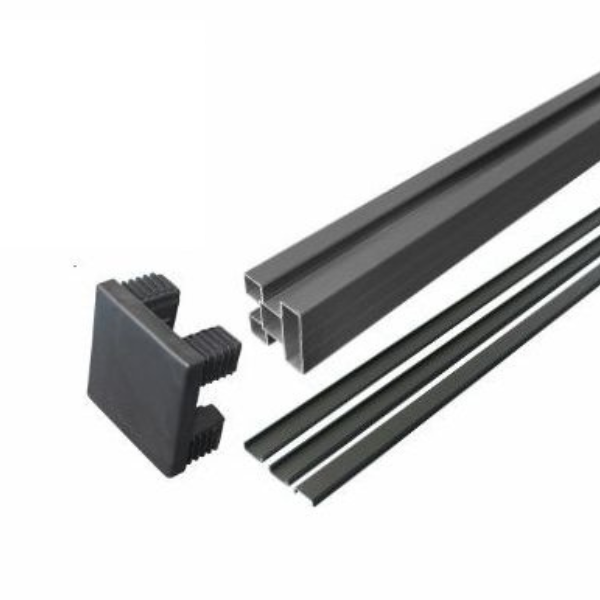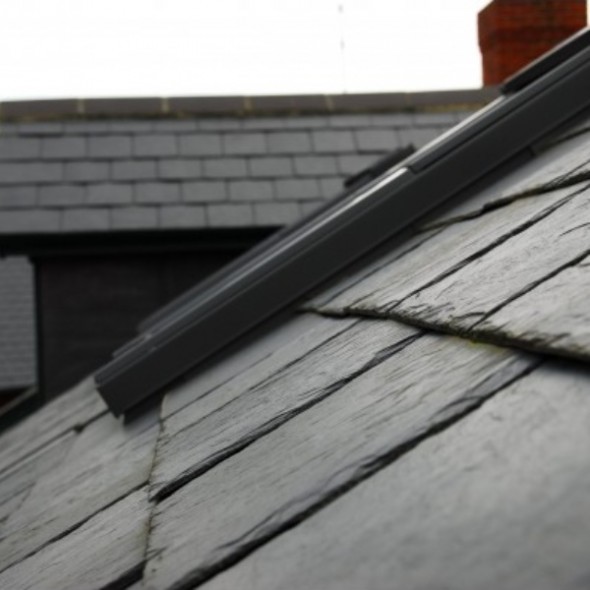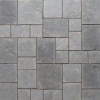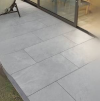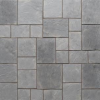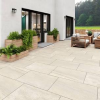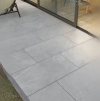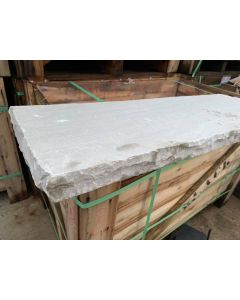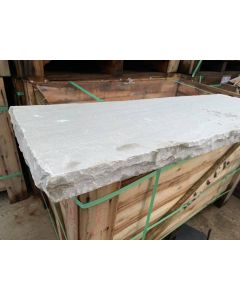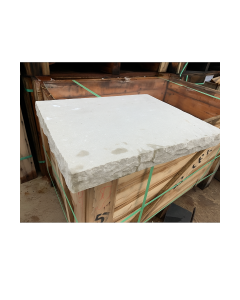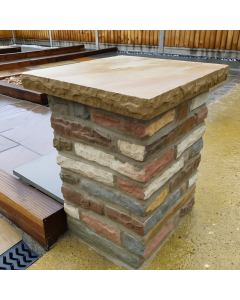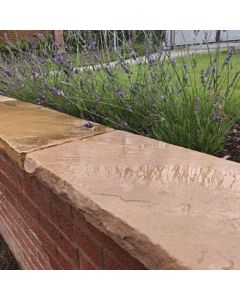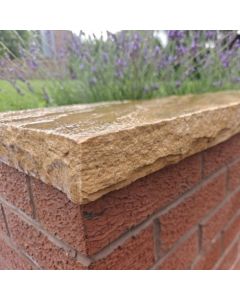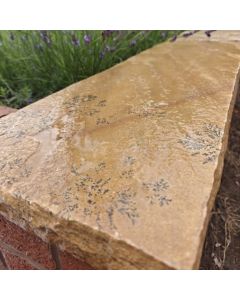This is a demo store. No orders will be fulfilled.
Walling & Copings in Highlight
-
Natural stone walling with matching coping for a unified look
-
Profiles for straight runs, step treads, piers and seating edges
-
Gentle falls and small overhangs to move water off the wall face
-
Tones and textures that coordinate with popular paving ranges
-
Samples available to compare under your garden’s light
-
UK-wide delivery with careful packing for safer arrival
What coping stones do for walls
Coping stones act as a protective cap. A gentle fall encourages rainwater to run off the top, while a modest projection helps water drip clear of the wall face. That simple detail limits staining, reduces freeze–thaw stress and helps the wall hold its line through the seasons. On low walls and planters, a softened edge can double as a comfortable perch, turning practical boundaries into usable seating along patios and paths. On gateposts and corners, a square or pyramid cap gives the build a tidy crown, resists standing water and frames entrances with a crisp silhouette that reads well from the street and the garden alike.
Choosing stone walling to suit your garden
The walling you choose sets the tone for everything around it. Sandstone brings warmth and natural variation, ideal for cottage planting and mixed borders where you want a relaxed, layered feel. Granite reads more contemporary, with a fine grain and cooler tones that pair well with linear paving, rendered planters and restrained planting schemes. If a patio already anchors the space, echoing its colour in your walling and coping makes steps, raised beds and boundaries feel deliberate rather than added later. In compact gardens, keeping walling and paving within the same tonal family helps hard landscaping recede so the area feels larger. In wider plots, a deliberate contrast can frame features and define zones without resorting to tall screens.
Texture matters as much as colour. Sawn faces produce sharp lines and a modern look that suits simple planting and clean furniture silhouettes. Split-faced or pitched walling adds shadow and movement that reads beautifully under evening lighting and creates a tactile backdrop for grasses and evergreens. Think about how surfaces catch light through the day. Grazing light across a textured face can add depth along paths, while a smoother finish may be better where you want the wall to sit quietly behind planting. Consider upkeep as well. Mid-tones tend to show fewer marks between seasonal cleans, while heavily riven textures gather more character but may need slightly more frequent brushing where leaves collect.
Coping profiles explained
Flat coping suits long, straight runs and minimalist schemes. It sits neatly over walls and planters, giving a crisp outline and a practical surface for resting a drink or a small planter. Bullnose coping introduces a gentle radius that softens the edge. It is comfortable to sit on and forgiving where people brush past frequently, such as on step landings or narrow terraces that double as walkways. For piers and gateposts, square or pyramid caps provide visual punctuation. They emphasise the rhythm of the wall, add height where needed and create a natural place to end a run or frame an opening. The right profile is the one that complements how you will use the space while guiding water away from the wall face and protecting the work below.
Detailing for durability and a neat finish
Good results come from small, consistent details. A level, even bed helps joints stay tight and lines remain straight, which is especially important where walling meets steps or runs alongside a patio edge. A discrete drip line on the underside of the coping projection encourages water to fall clear of the wall face instead of tracking back underneath. Around planters and raised beds, allow for drainage so moisture does not sit behind the wall. Matching the coping profile across planters and low boundaries ties everything together. Where hands and clothing will brush past often, a bullnose or eased arris is kinder to the touch and more forgiving in daily use. Pay attention to transitions between wall, paving and planting so surfaces feel connected rather than pieced together, and repeat a key tone or texture to help the features read as one design.
How walling and coping shape outdoor spaces
Low walls and planters define edges without feeling like barriers. Use them to break a large terrace into distinct zones for dining, lounging and cooking, or to carve level areas on a sloping plot without a run of steps at every change. A continuous coping line ties these elements together so steps, beds and boundaries read as one considered scheme. Around water or fire, a softened coping provides a safe, tactile edge and a comfortable rest for an elbow or a mug. Along paths, a slightly raised wall with a comfortable top becomes an invitation to pause and enjoy planting at eye level. Where privacy is needed, taller walls can frame planting and screen views while still feeling part of the garden’s structure rather than an afterthought.
Natural stone and concrete: how they differ
Many projects start with a simple question. Natural stone or concrete. Concrete can deliver a highly uniform appearance and may carry a lower initial price in some formats. Natural stone offers depth of colour and a character that develops gently over time. Its tonal variation often blends more naturally with existing paving and planting, and the surface typically catches light in a subtler way. When comparing options, look beyond the upfront cost to consider how the material will weather, how it sits beside your patio and planting, and whether a precise, consistent texture or a more organic feel suits the space you are creating. Matching walling and coping within a single stone range usually makes coordination easier where steps, planters and boundaries sit close together.
It can be difficult to decide which option will deliver the effect you have in mind, and it is common to change direction once you see materials in your own light. To make that decision easier, we offer a wide range of samples so you can compare tones and textures at home. Order a few, view them against your paving and planting, and choose with confidence. As a thank you, if you go on to purchase a full pack of your chosen option from us, give our team a call and we will refund the cost of the sample on that order.
At Paving Stones Direct, we aim to pair reliable materials with fair pricing and straightforward guidance. If you would like more information about stone walling and coping options, or want a second opinion on profiles, tones or layout, our team is happy to help. Call 0333 321 5091 or email sales@pavingstones.co.uk and we will point you in the right direction.

